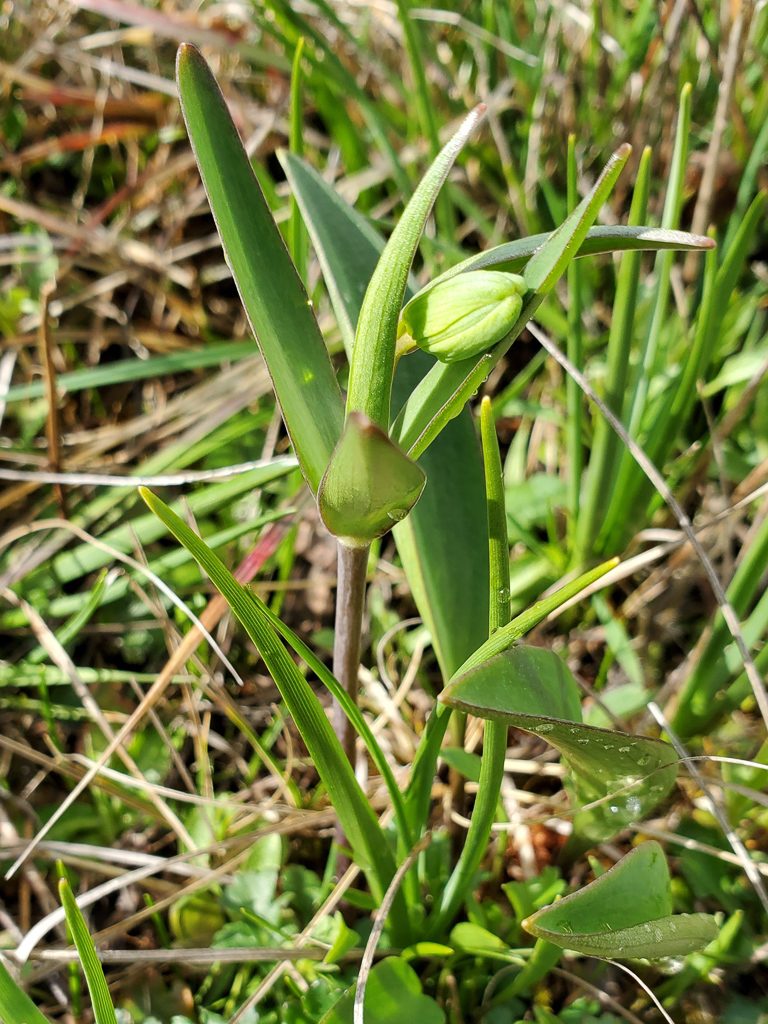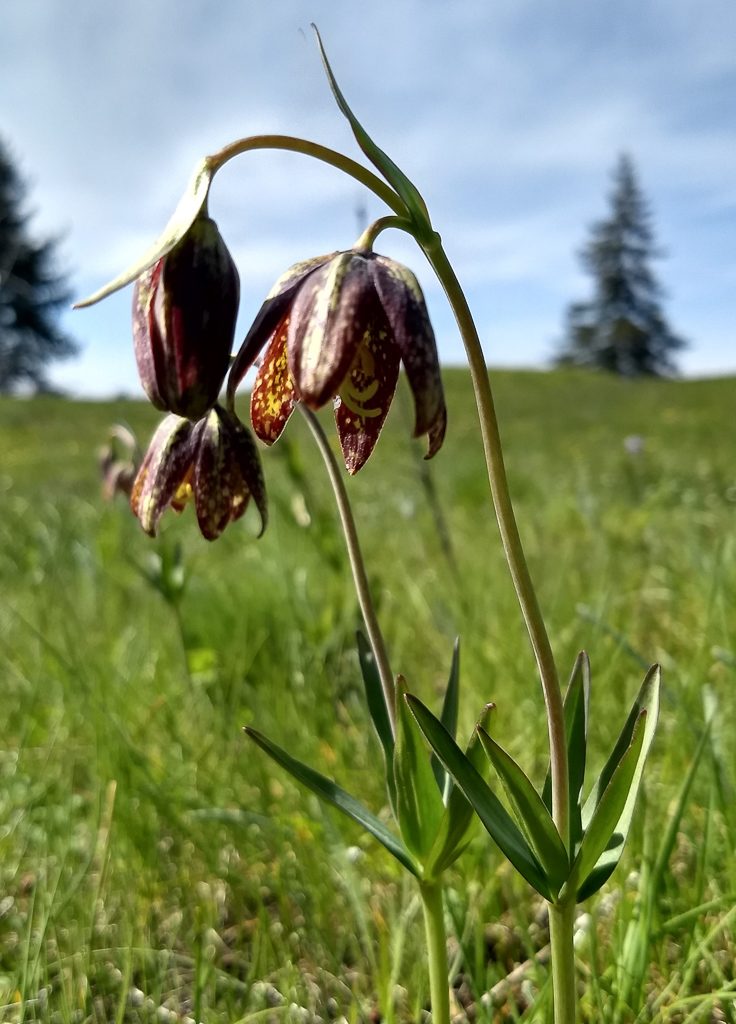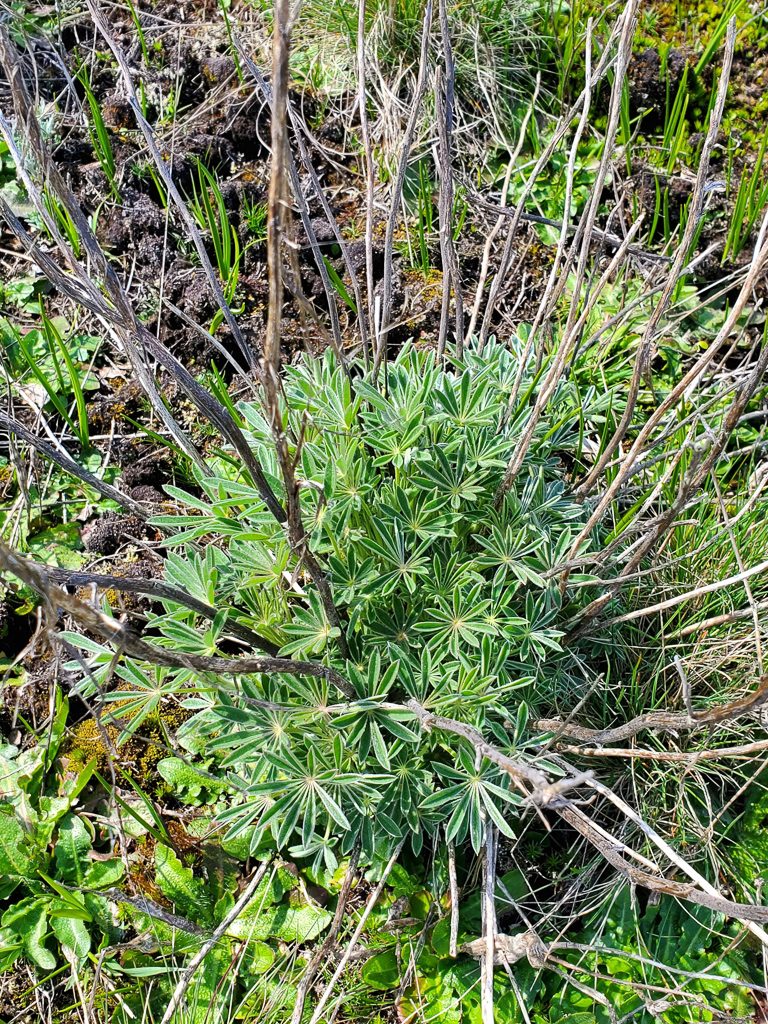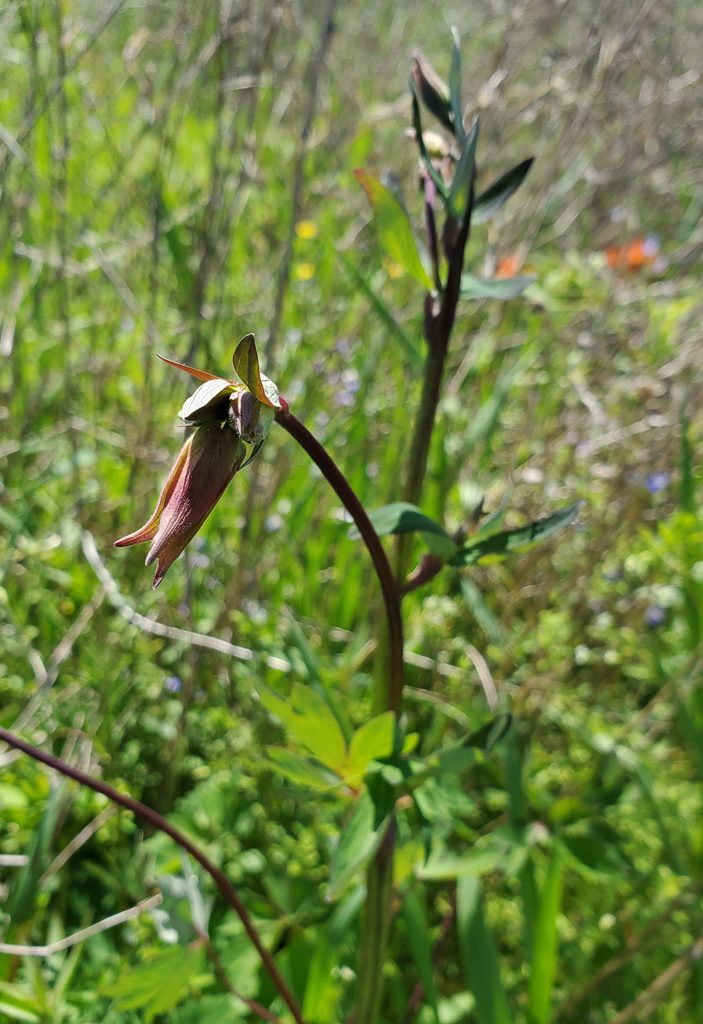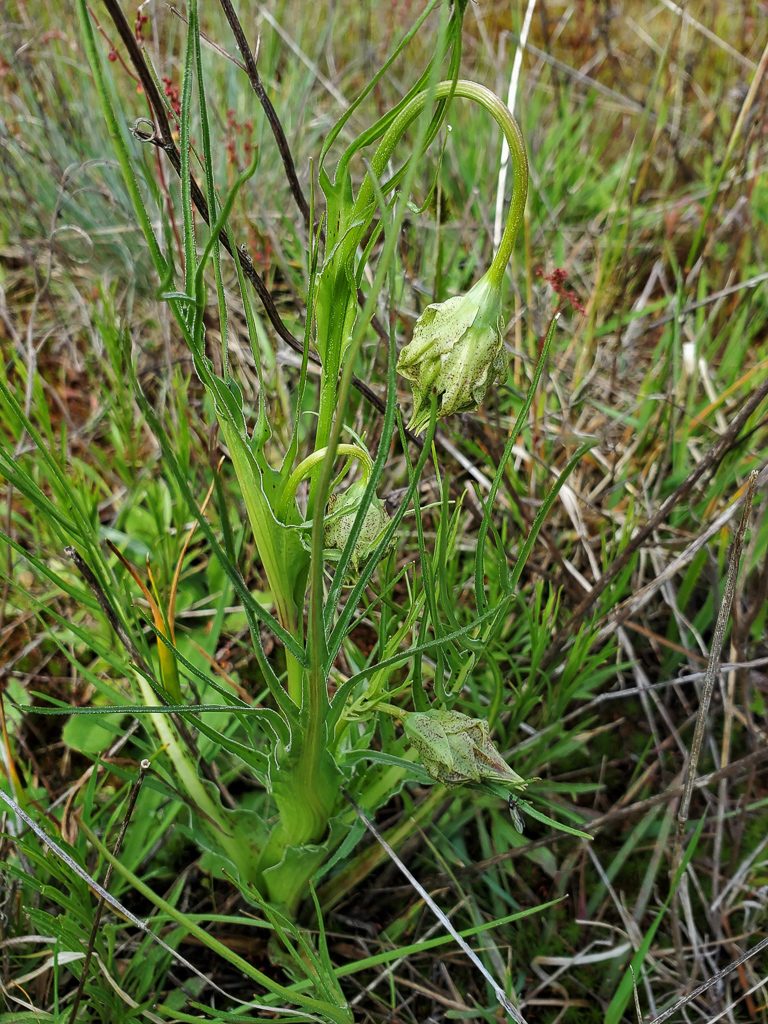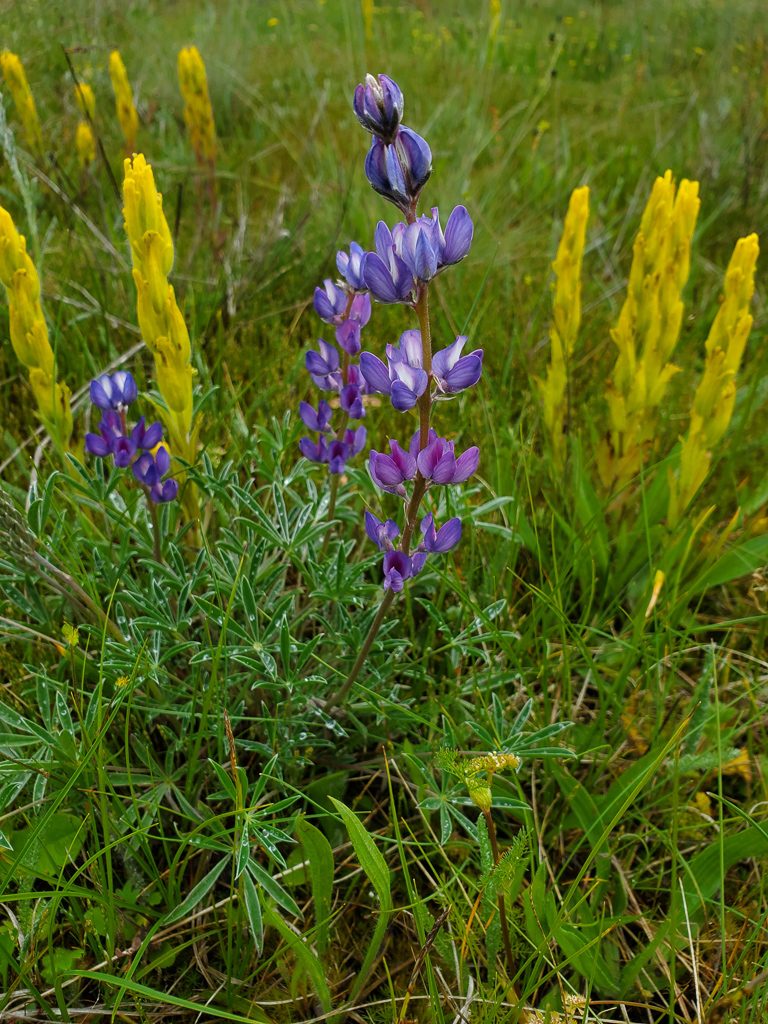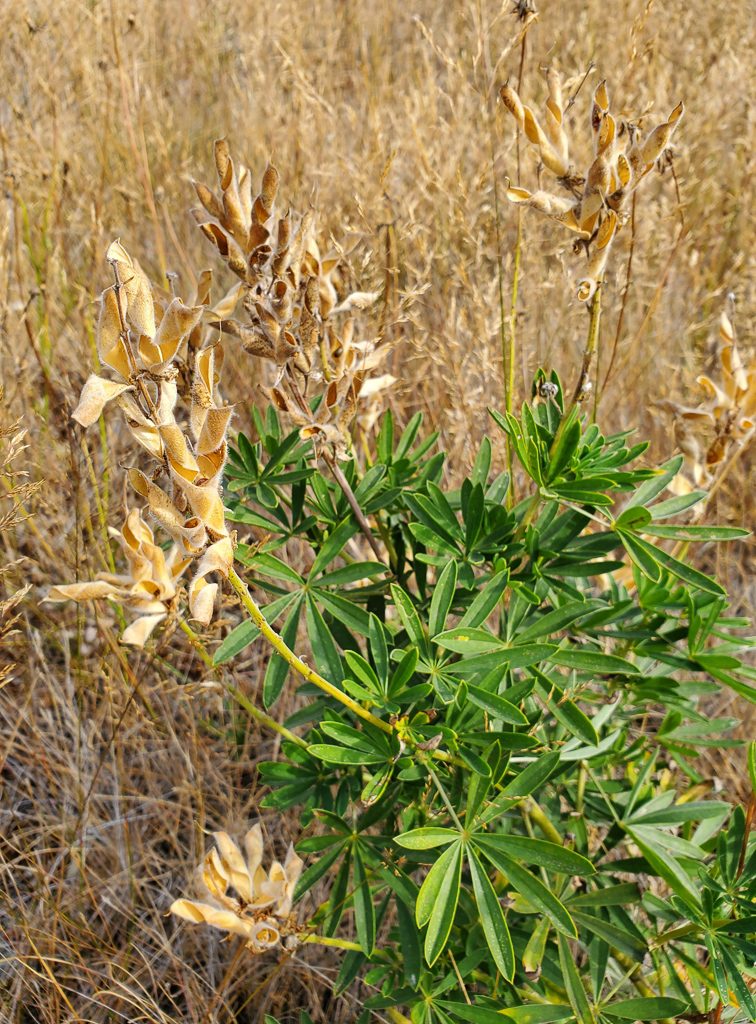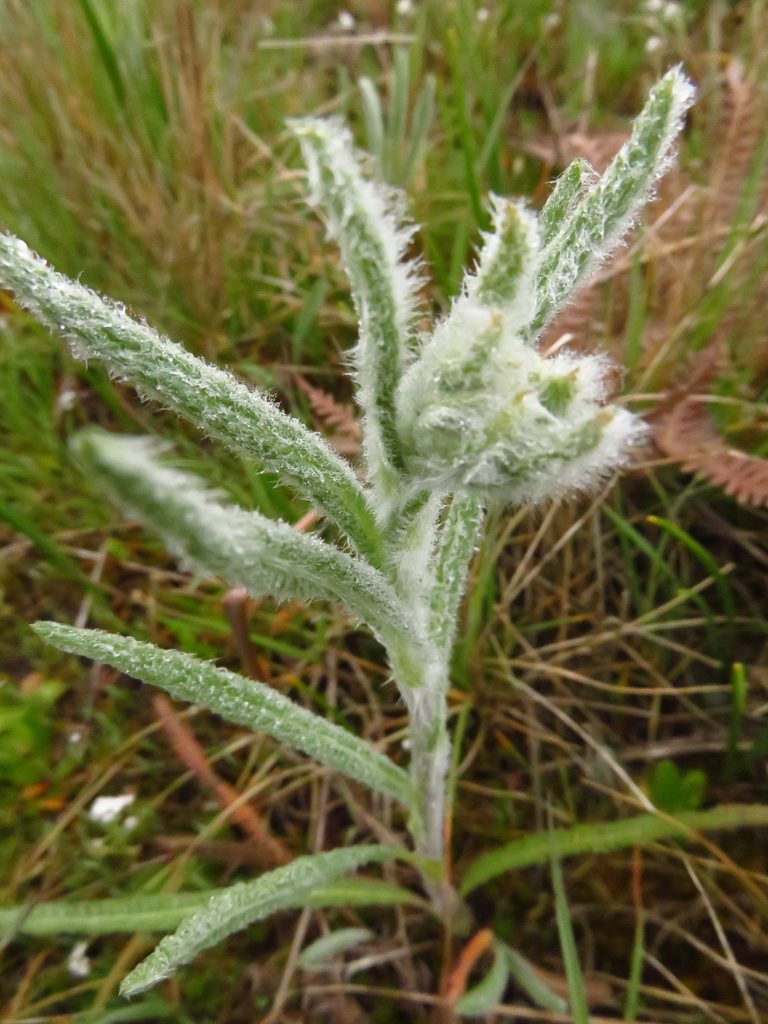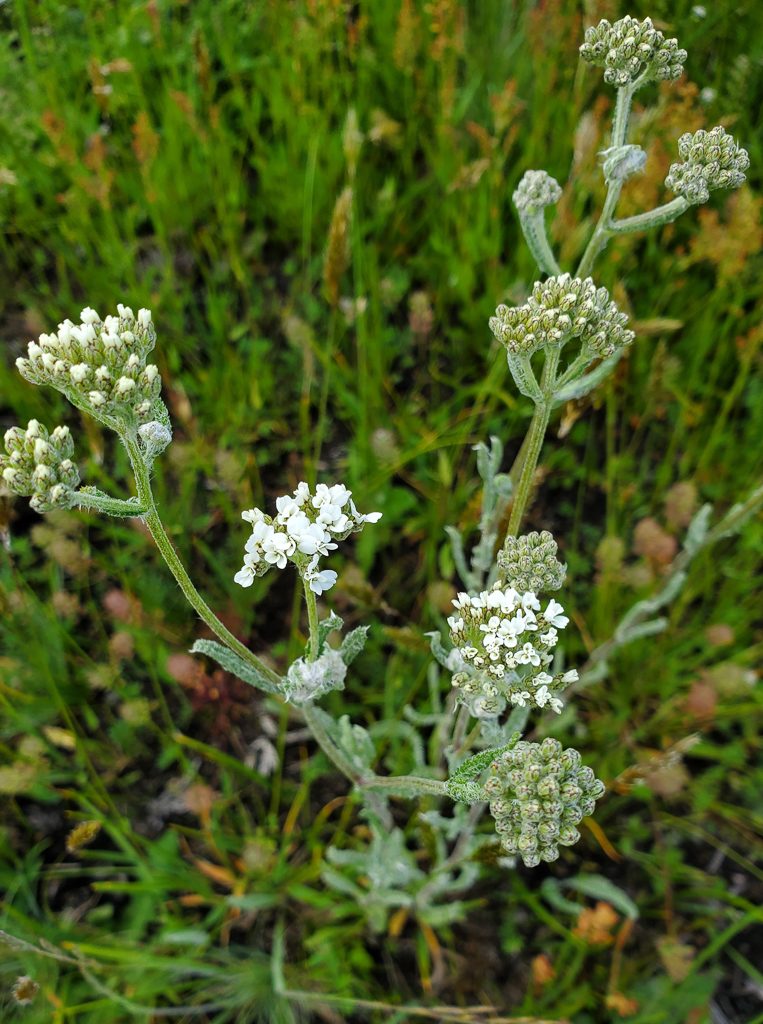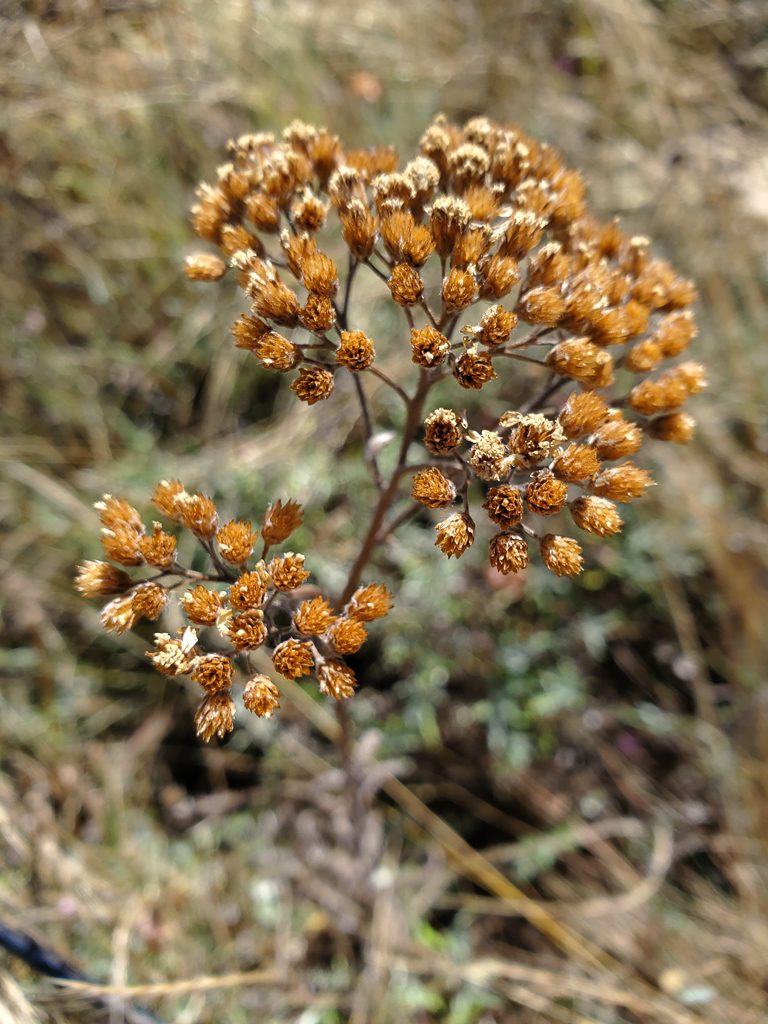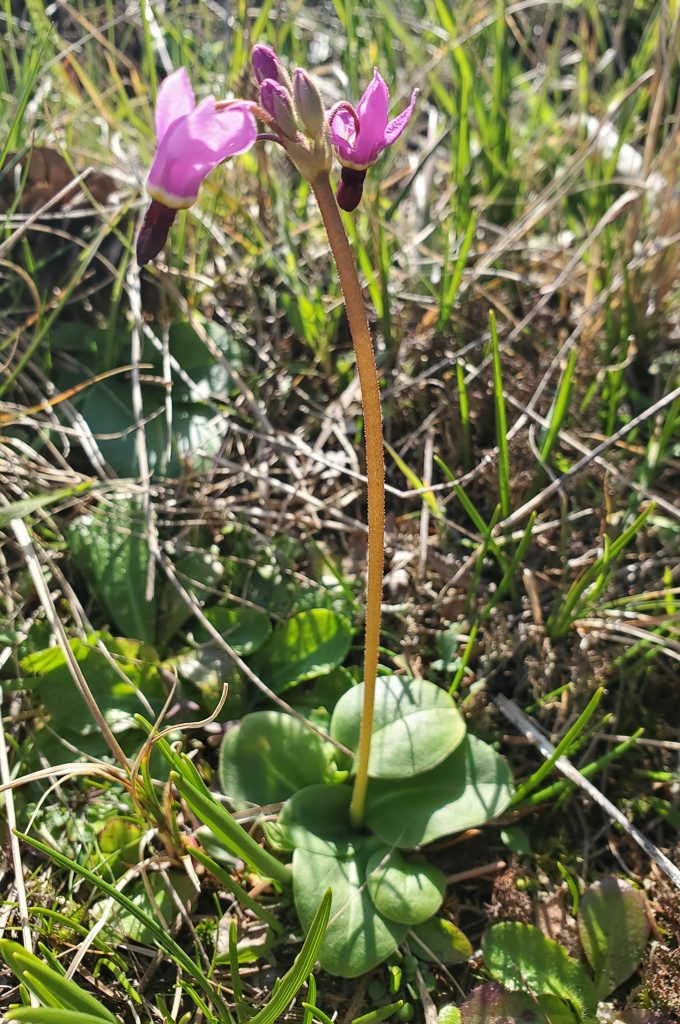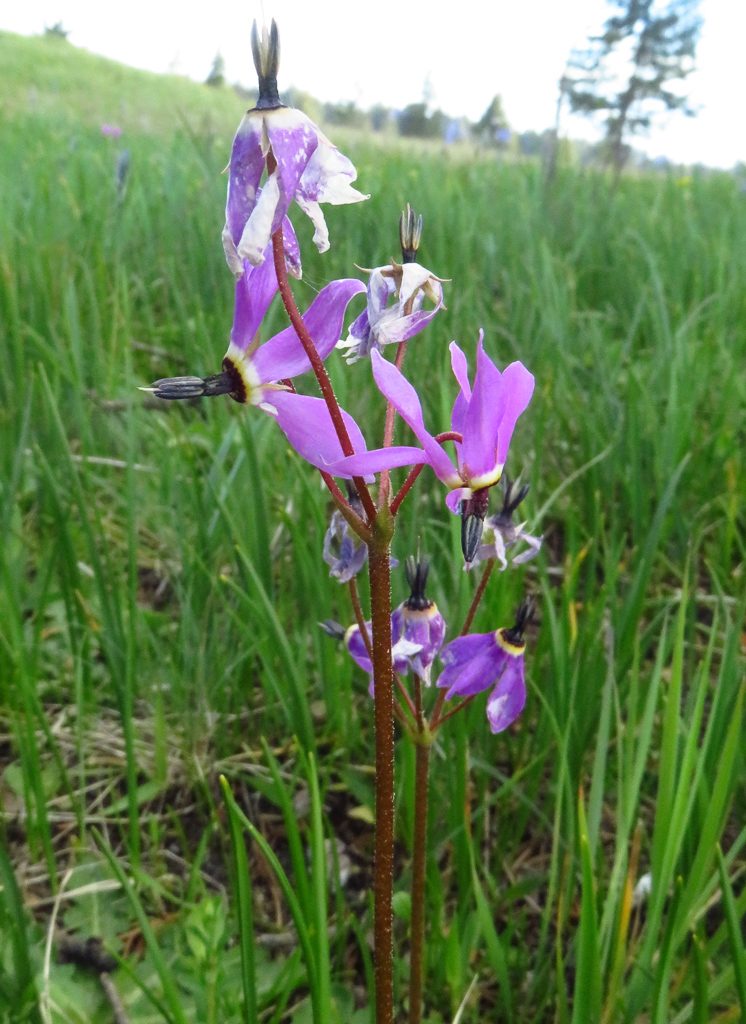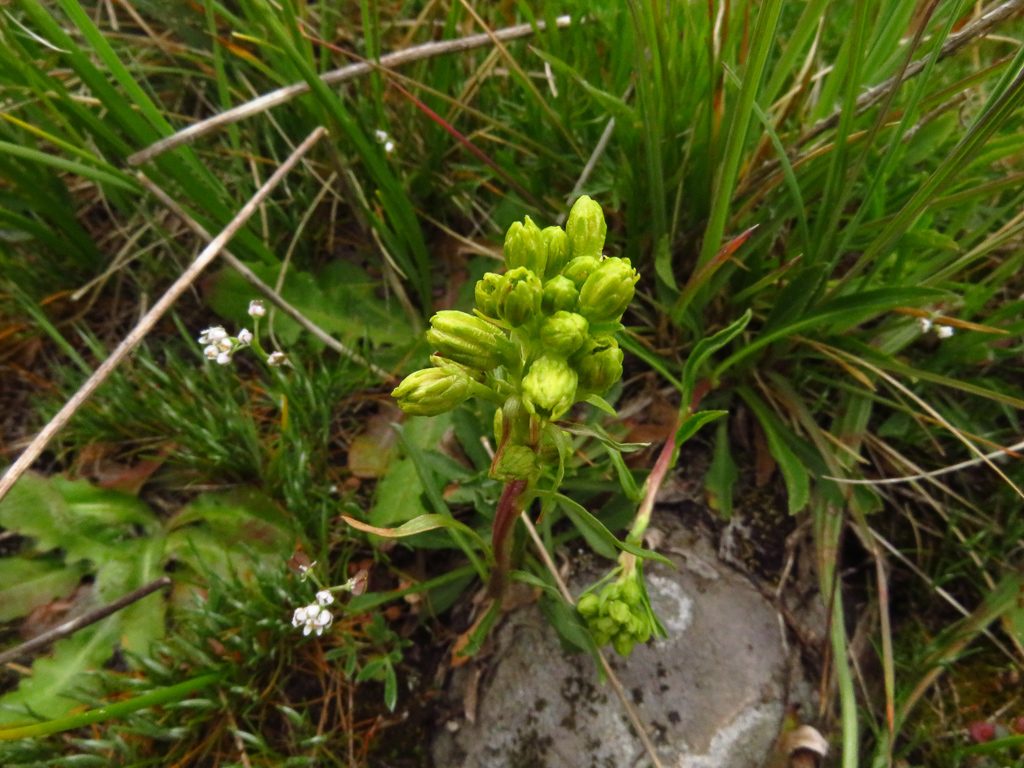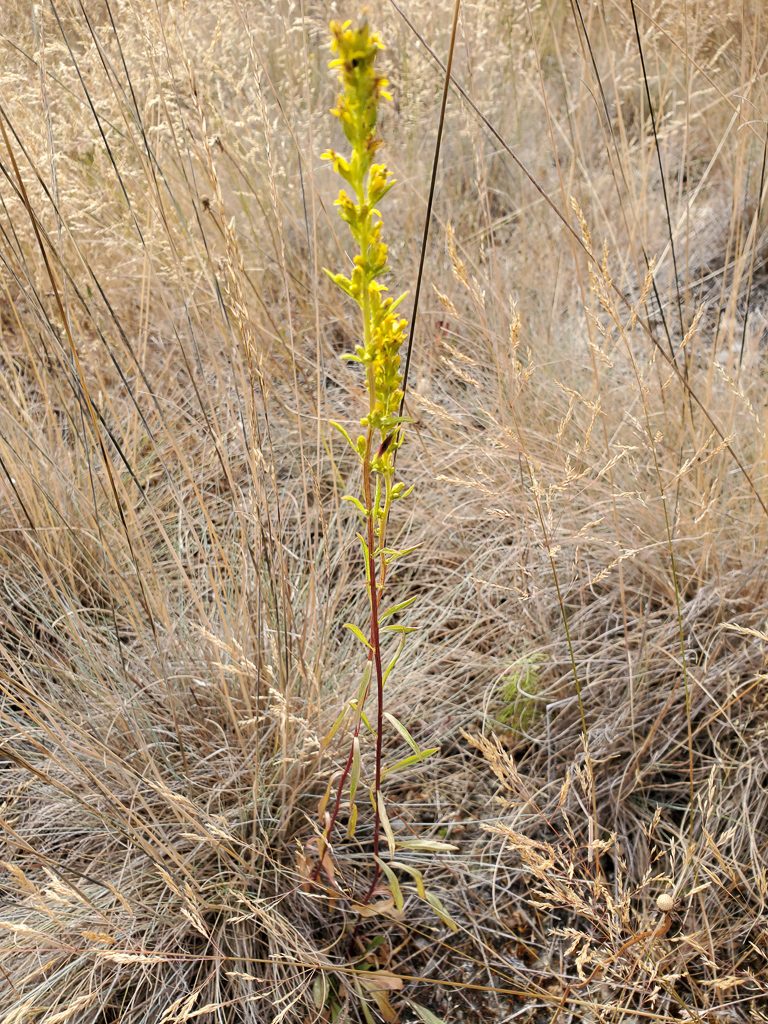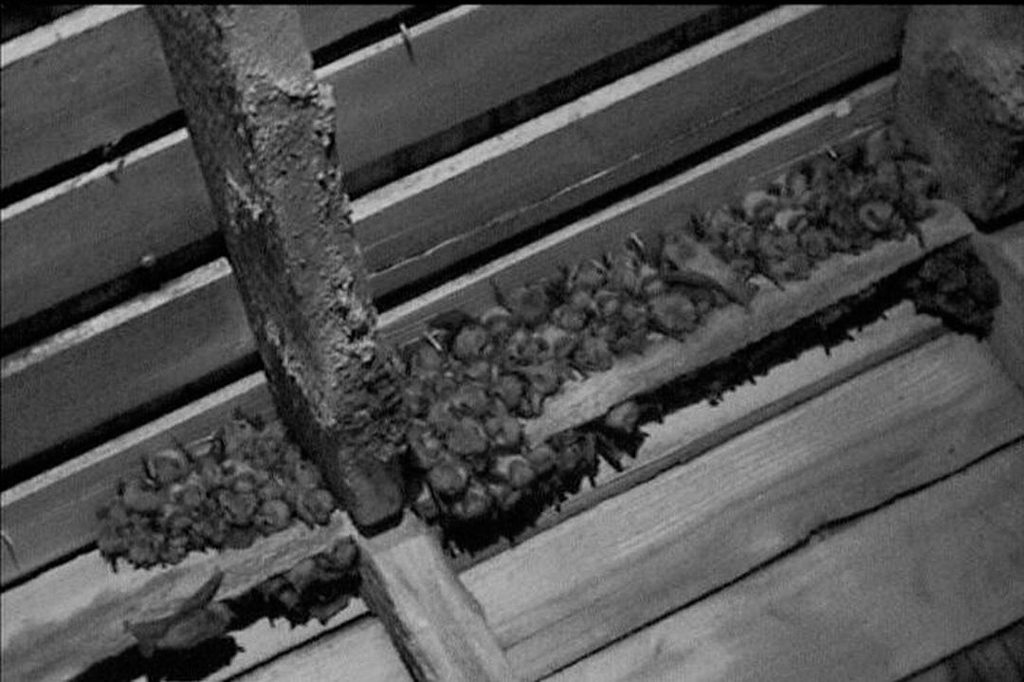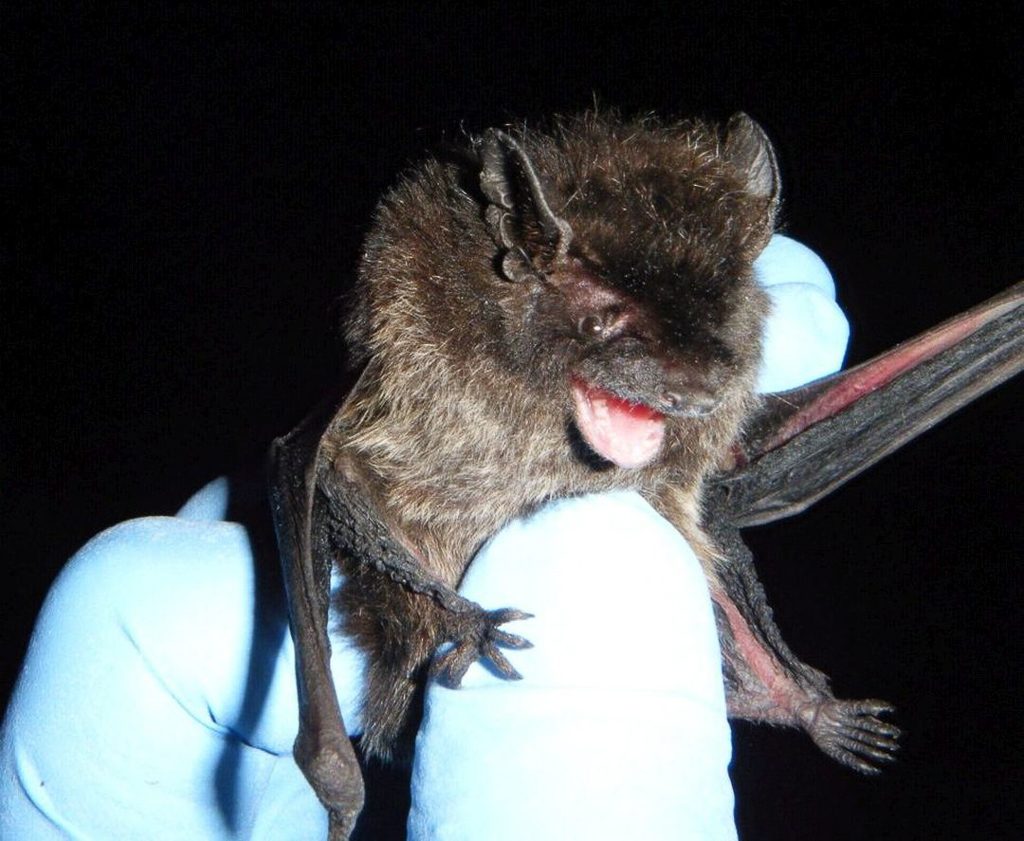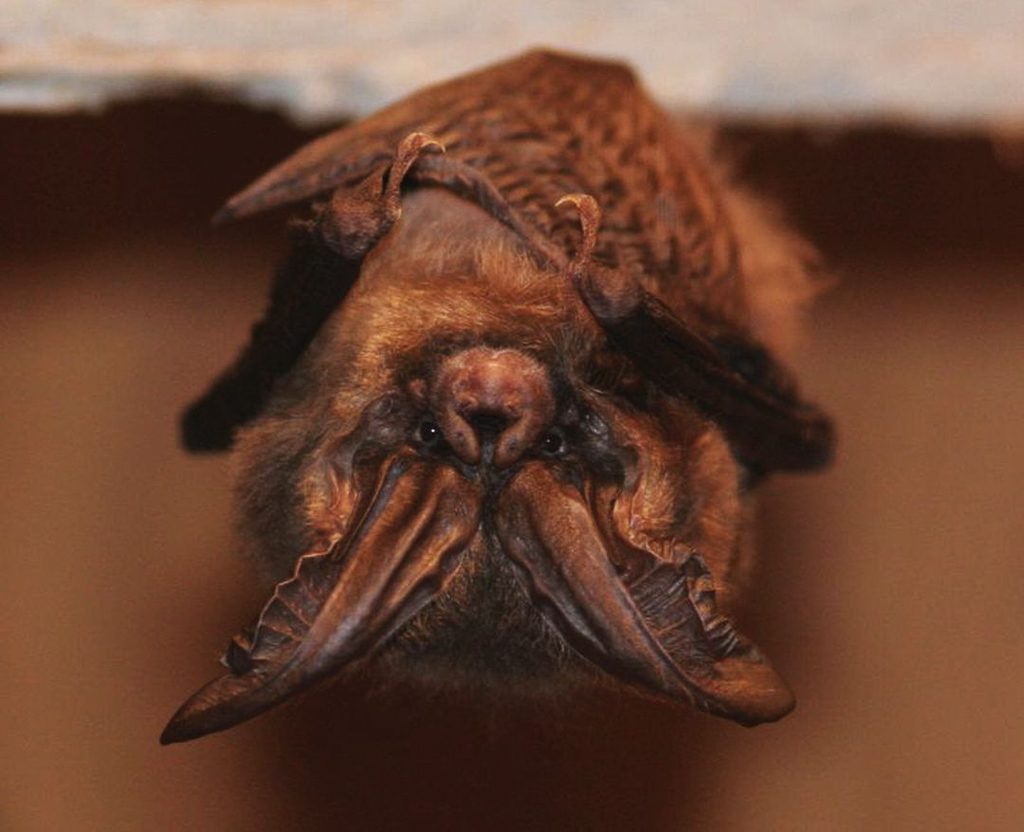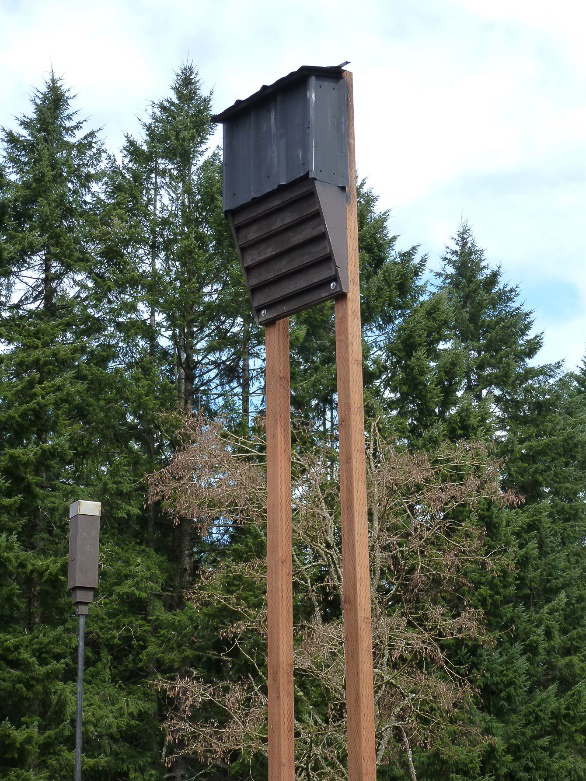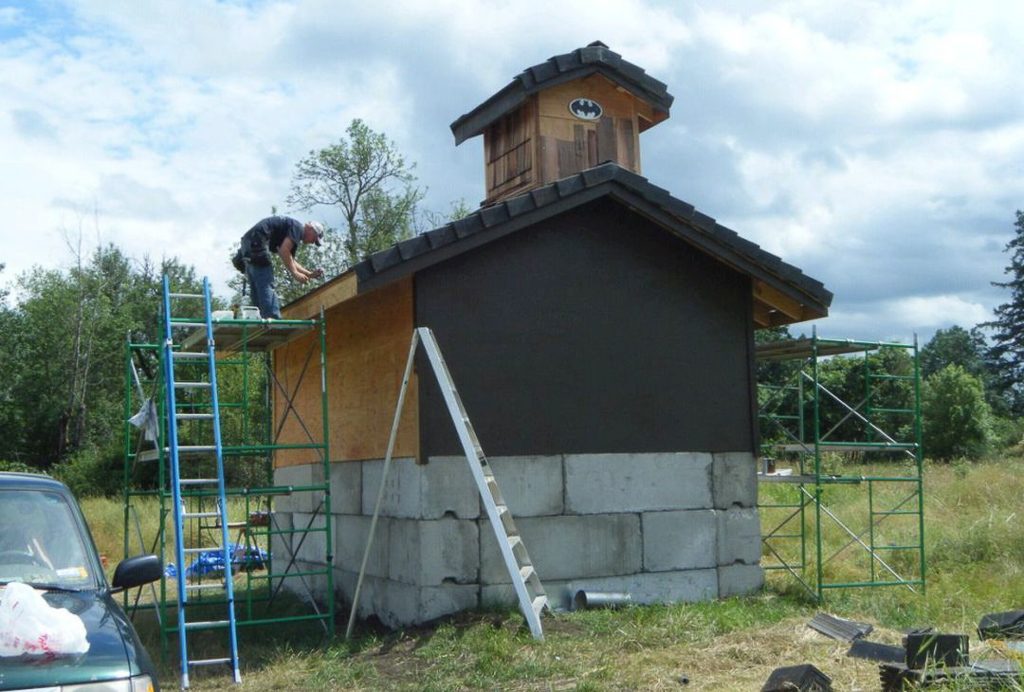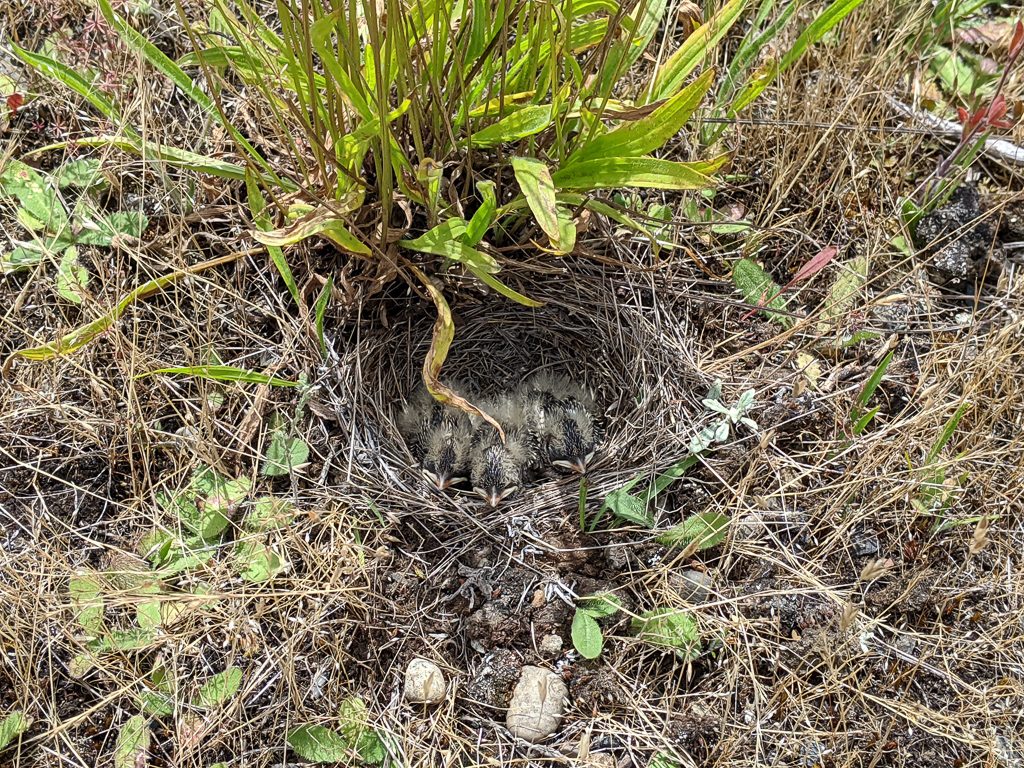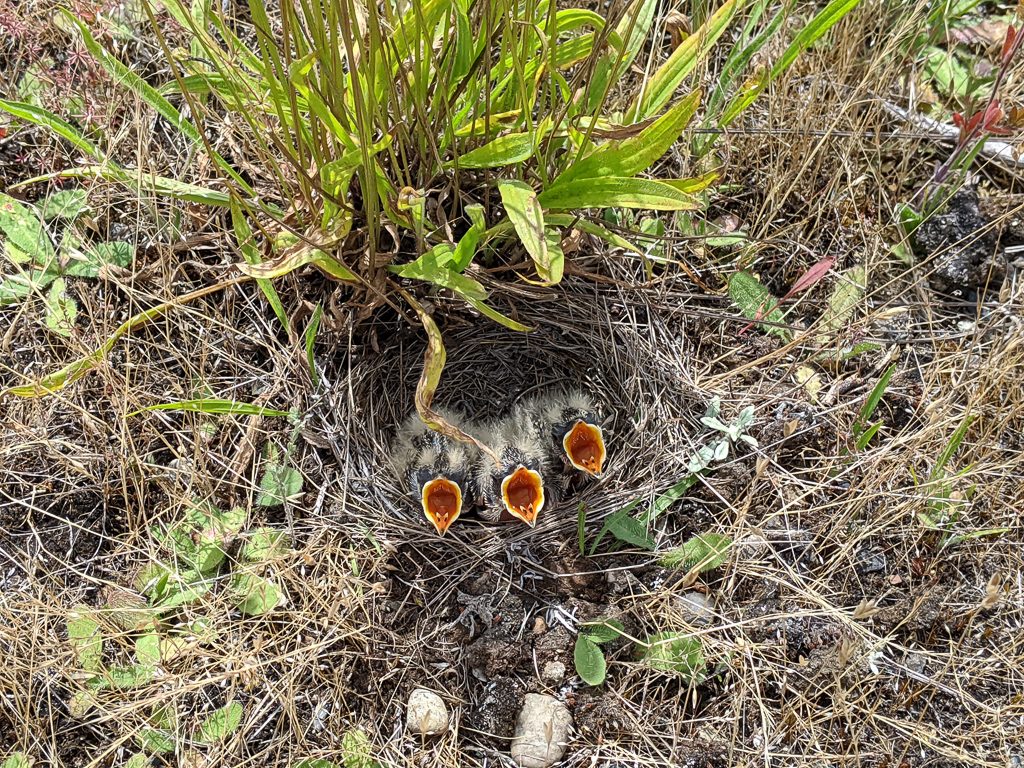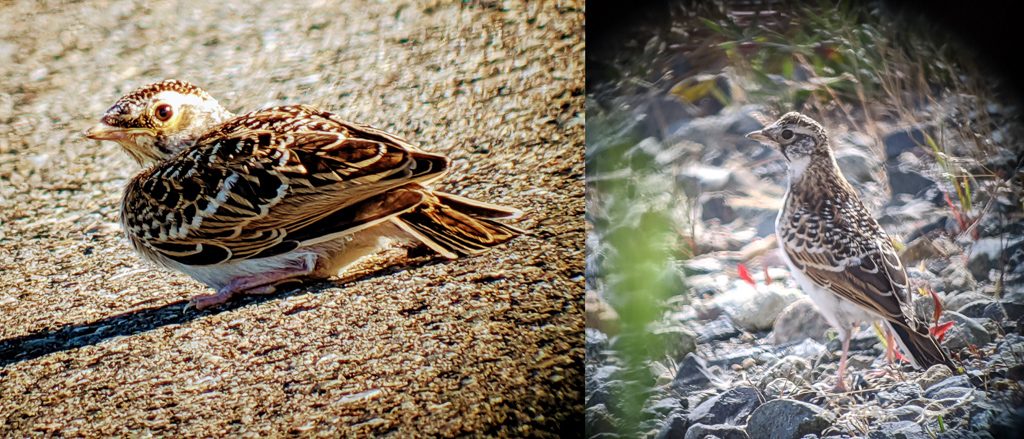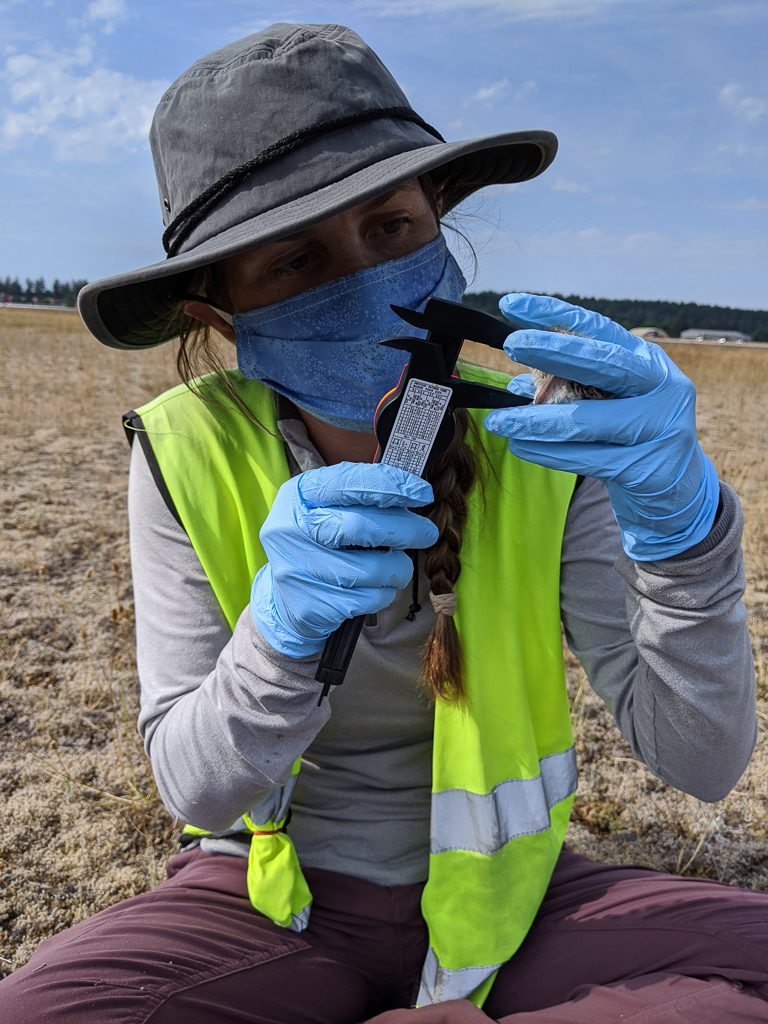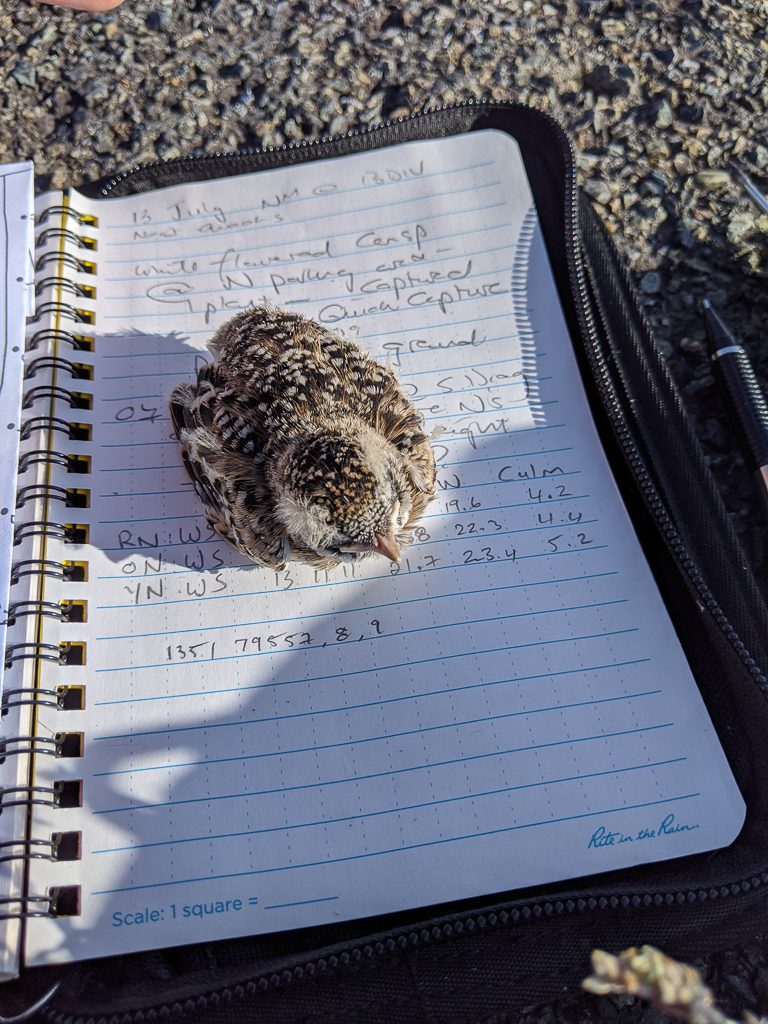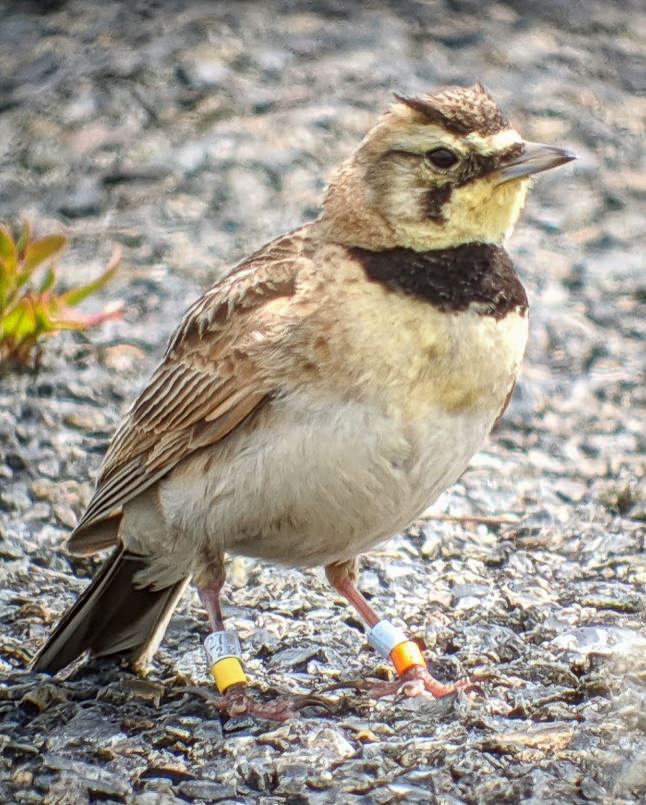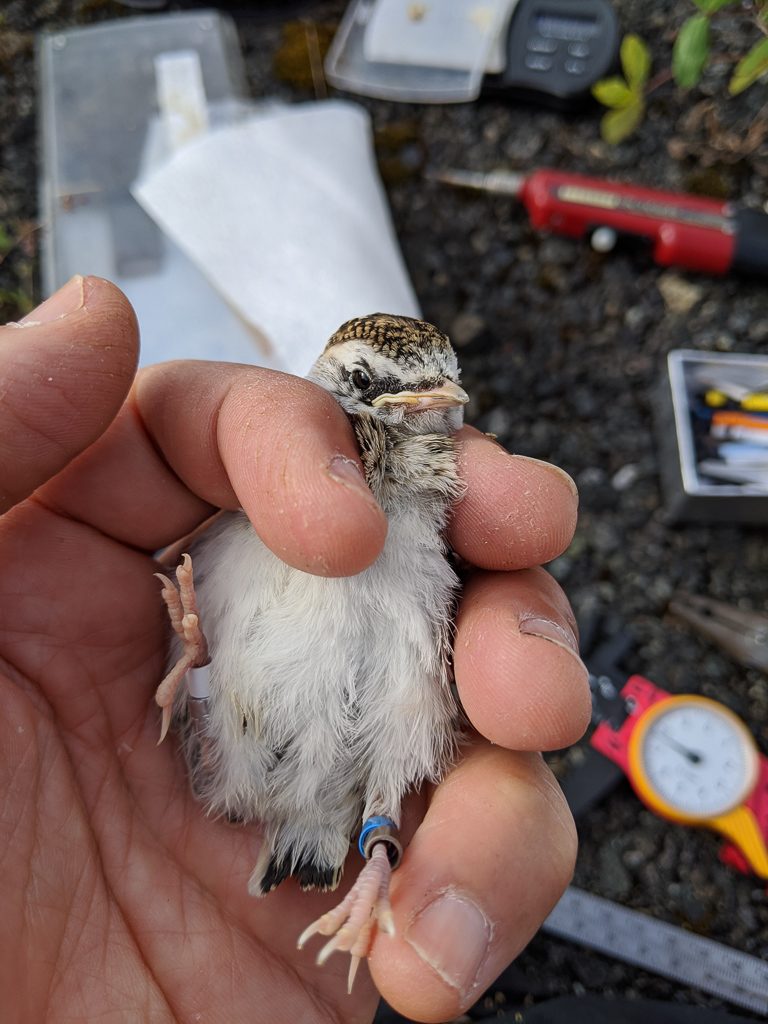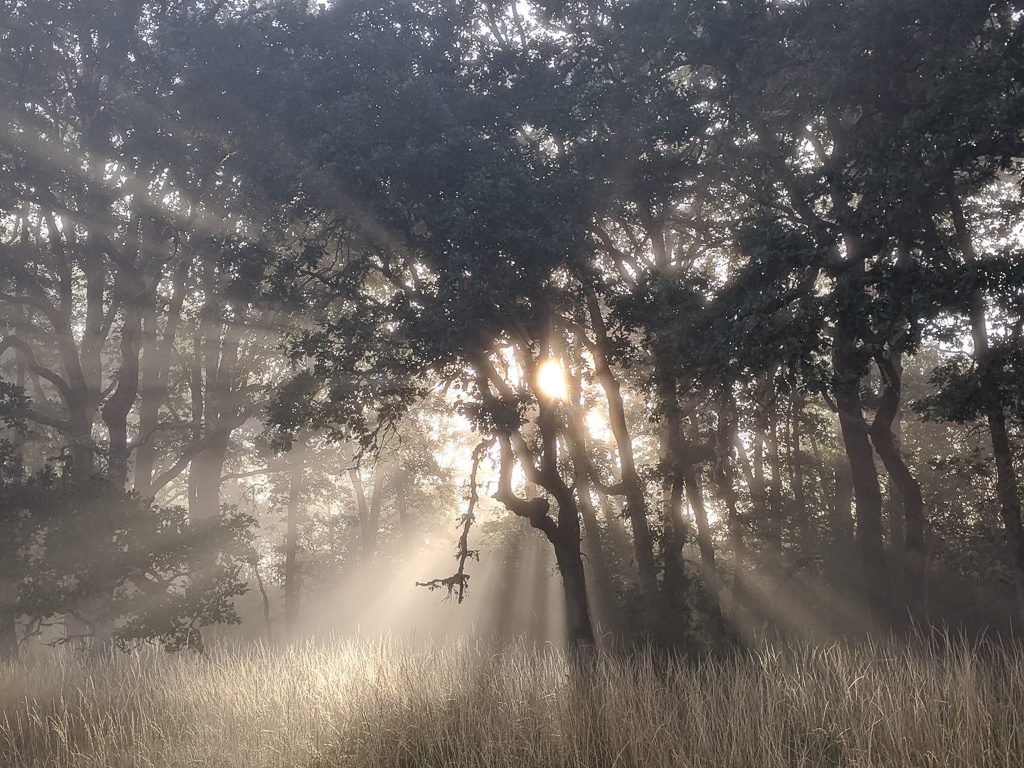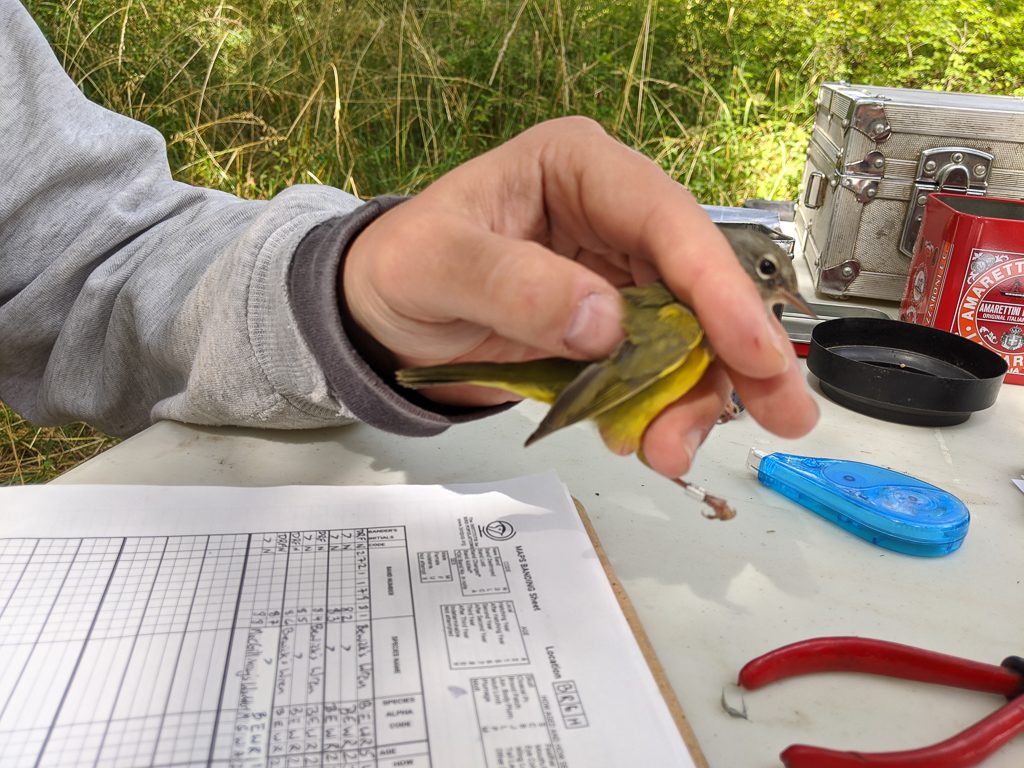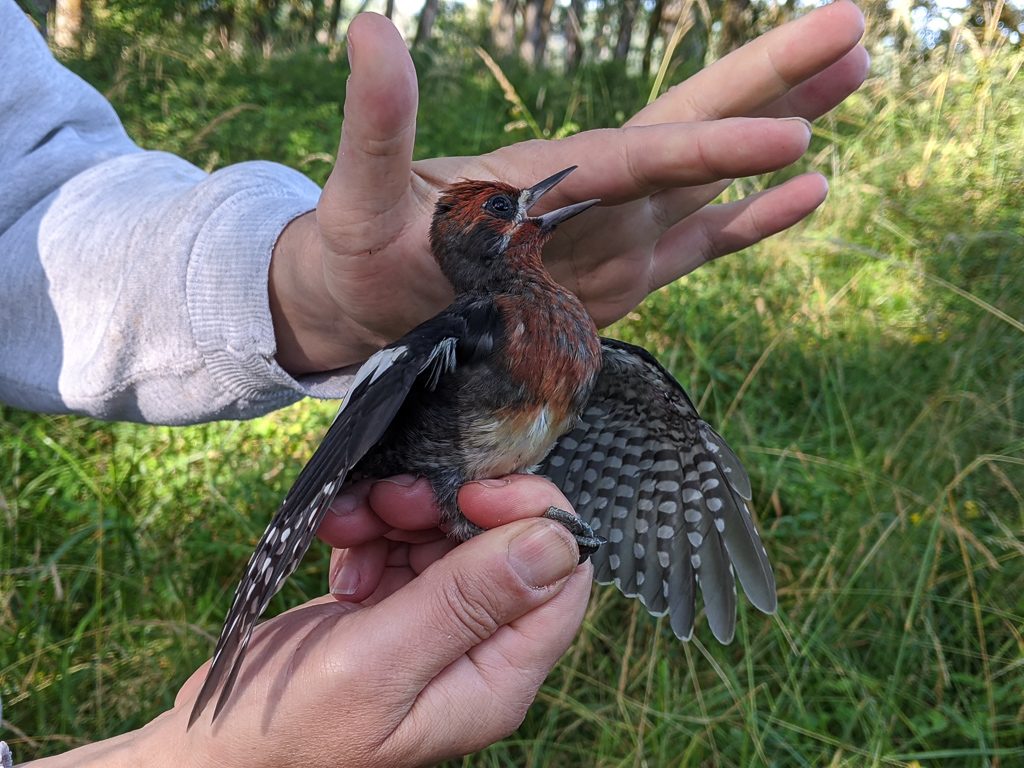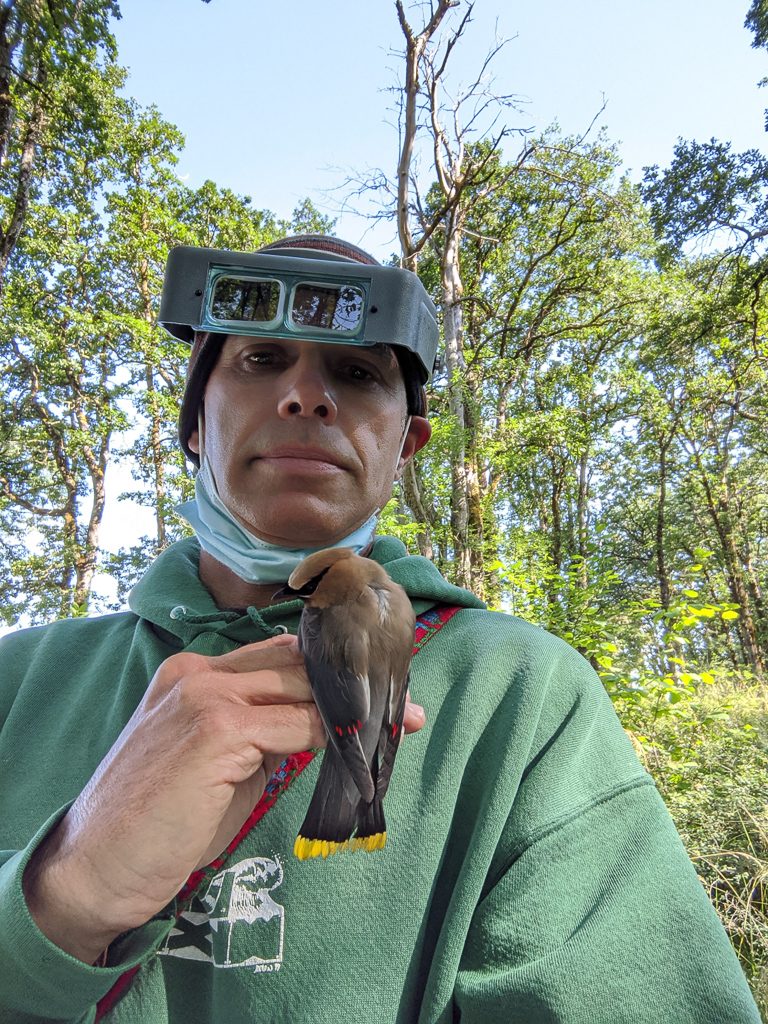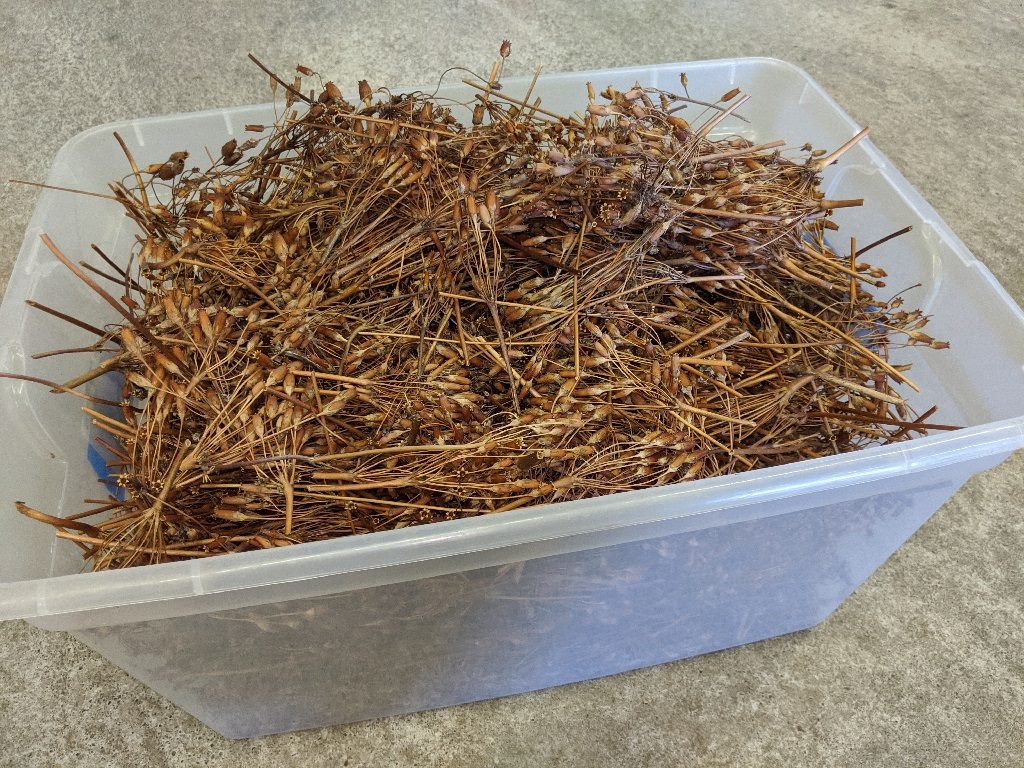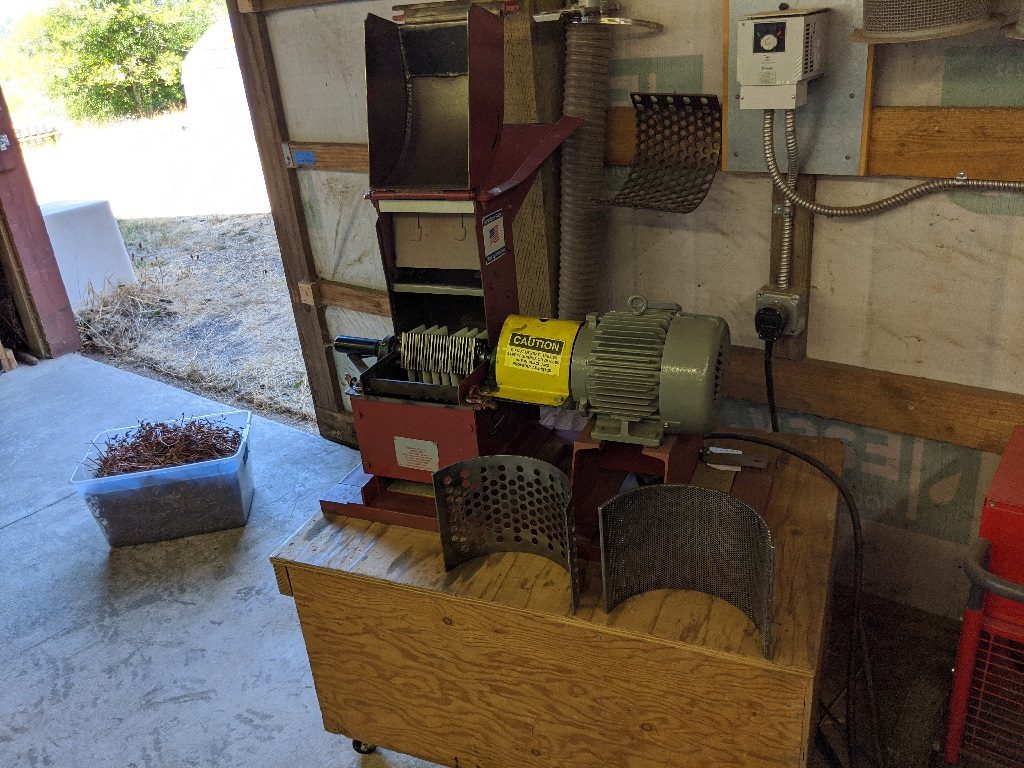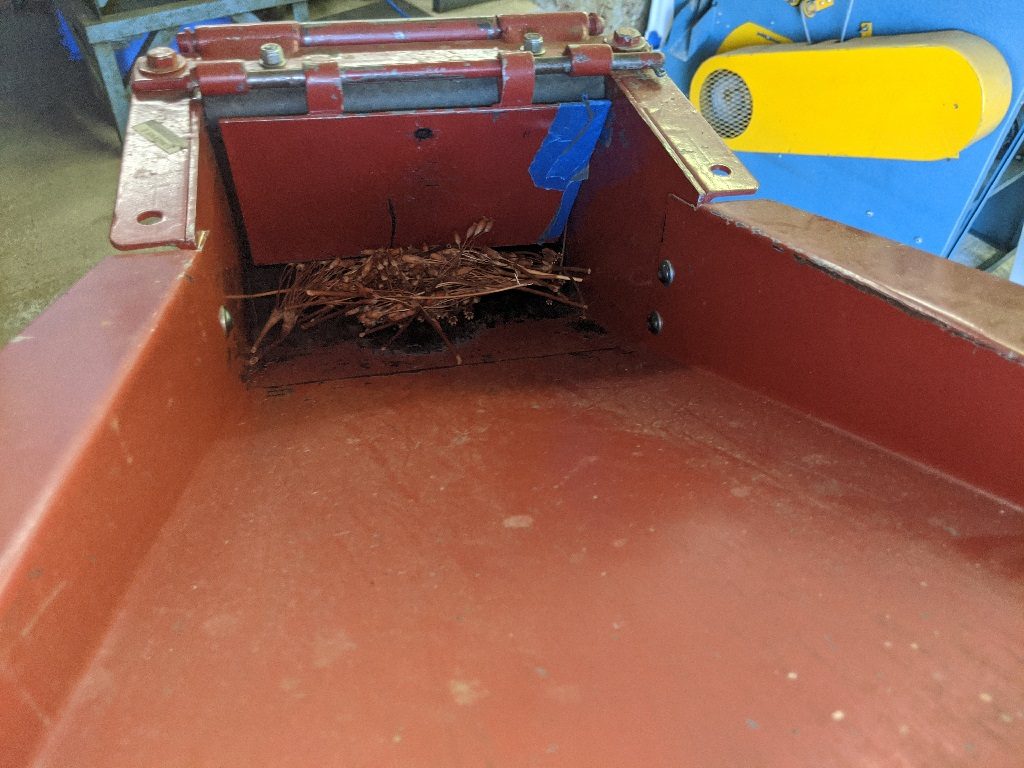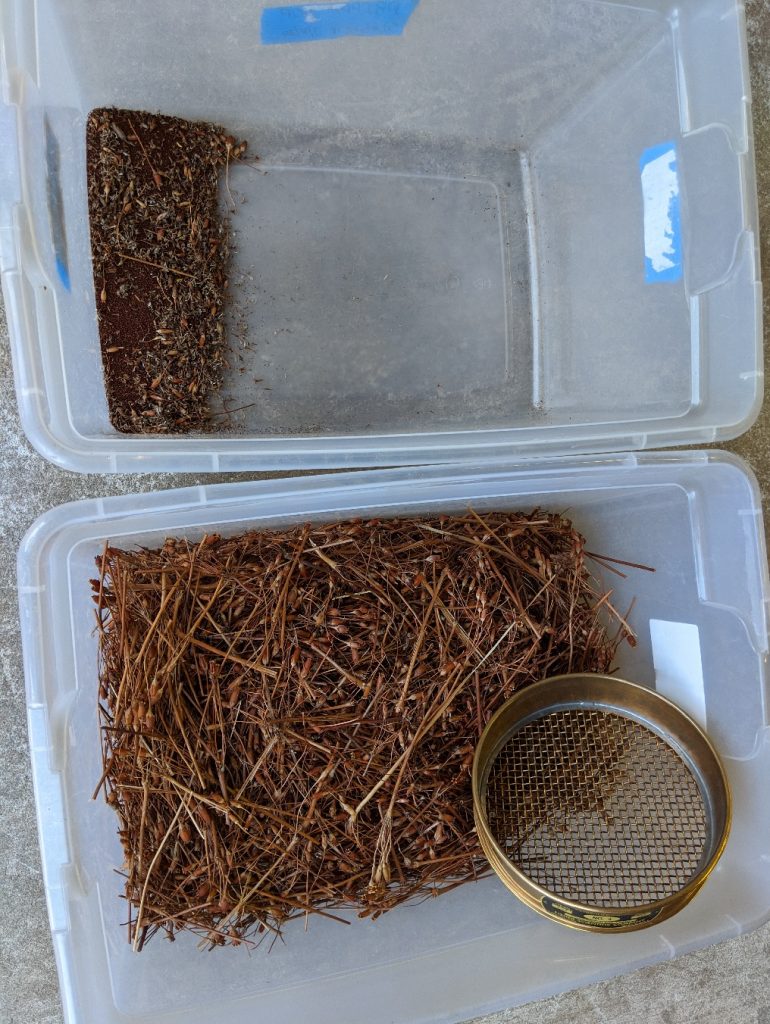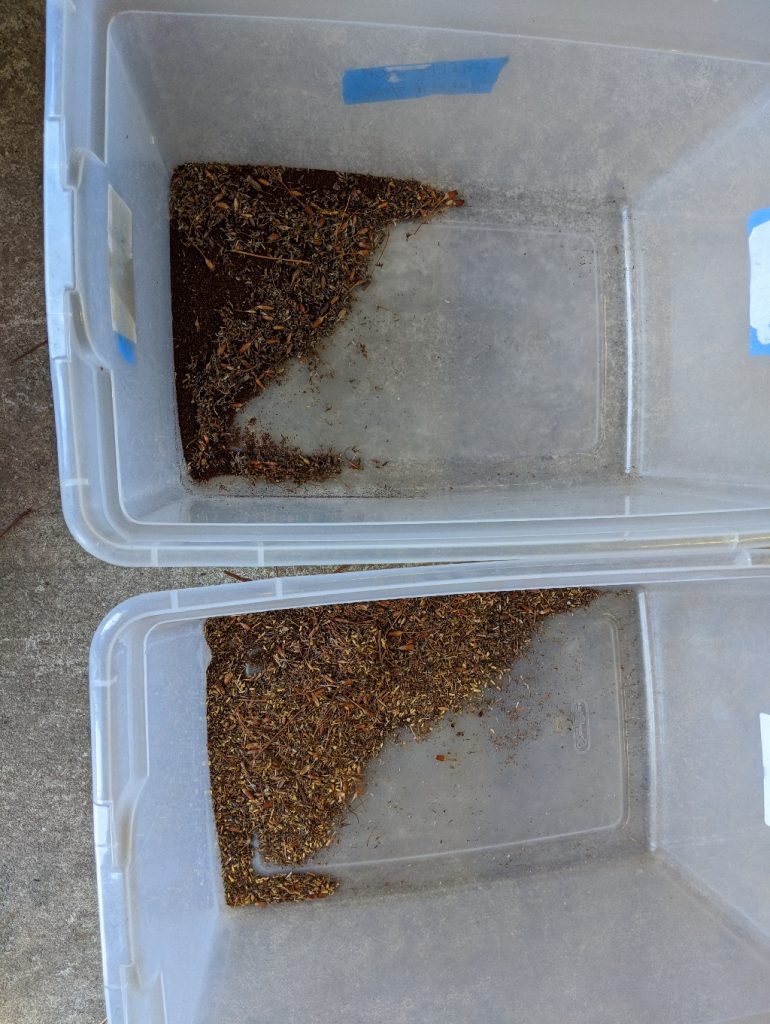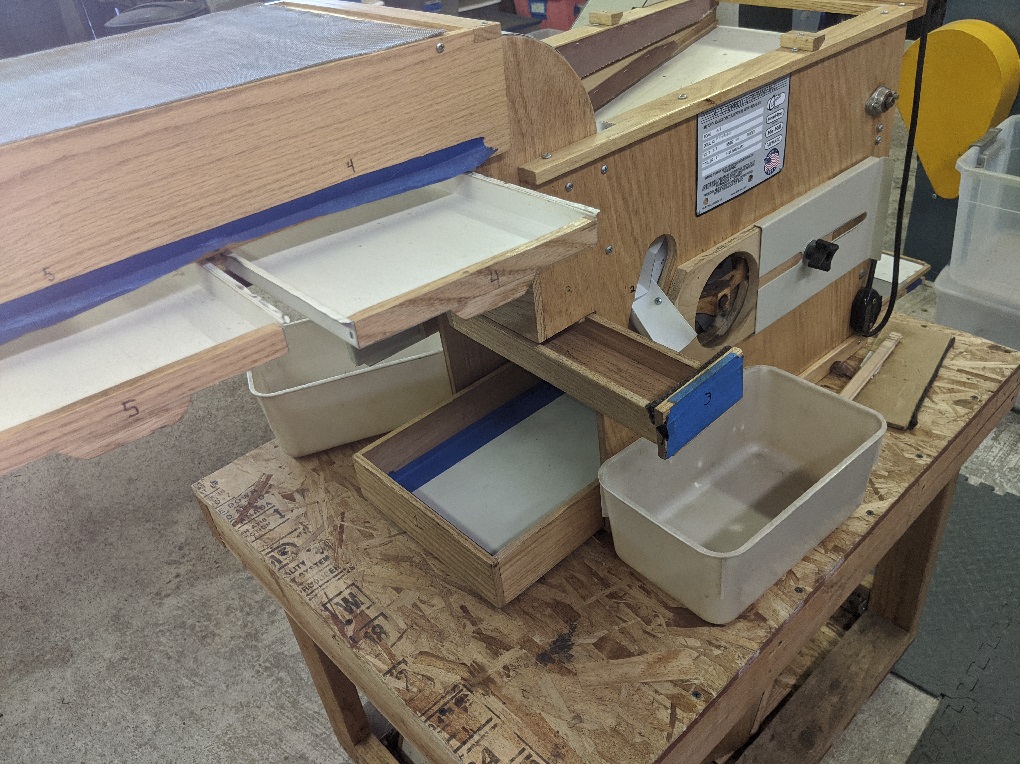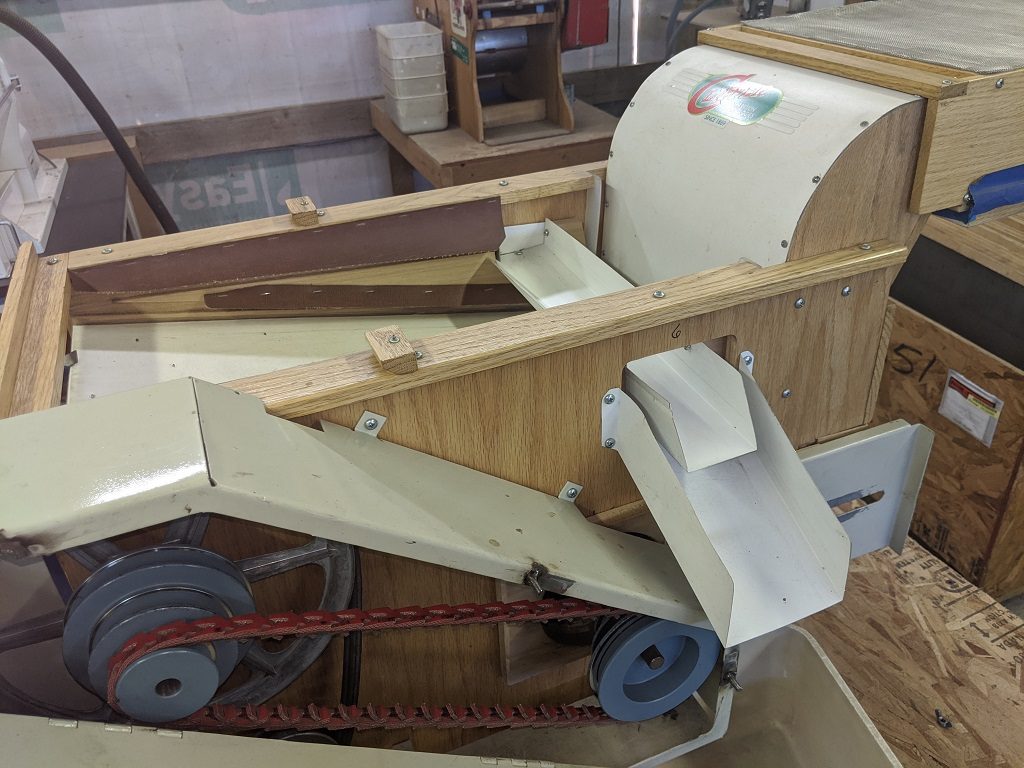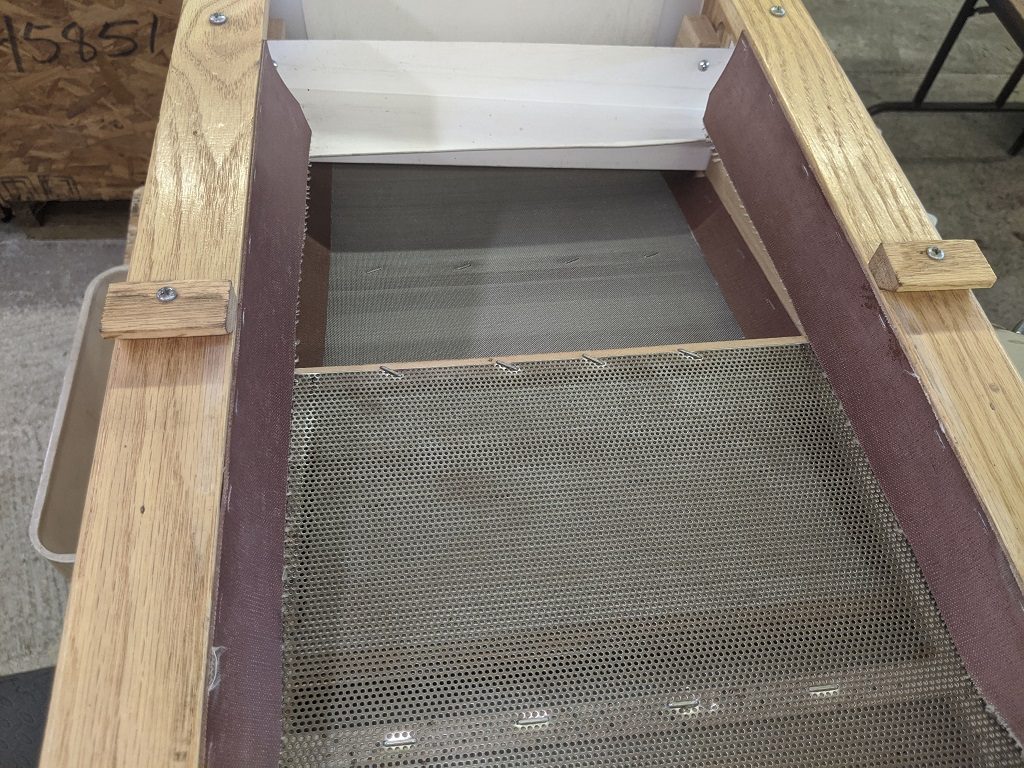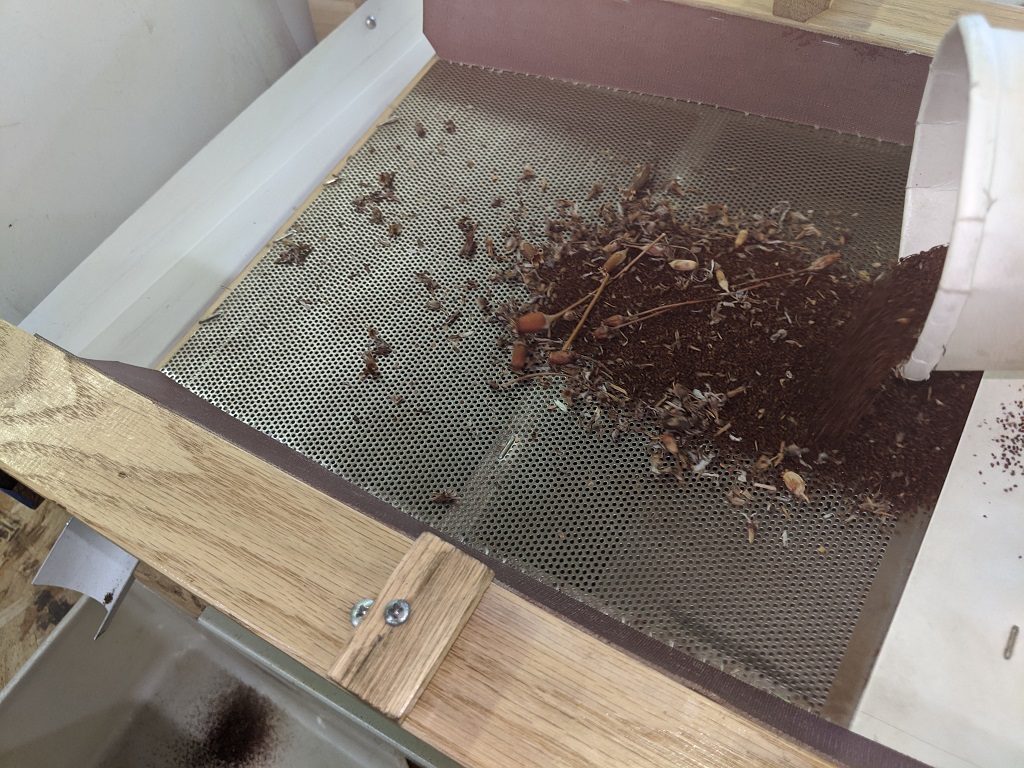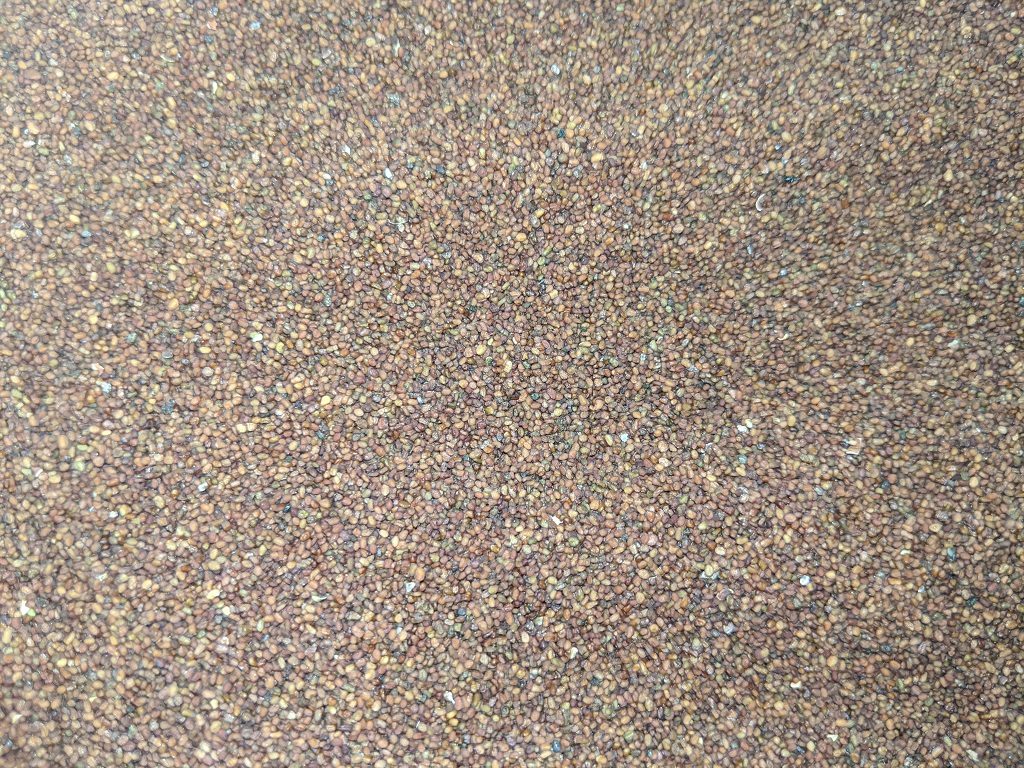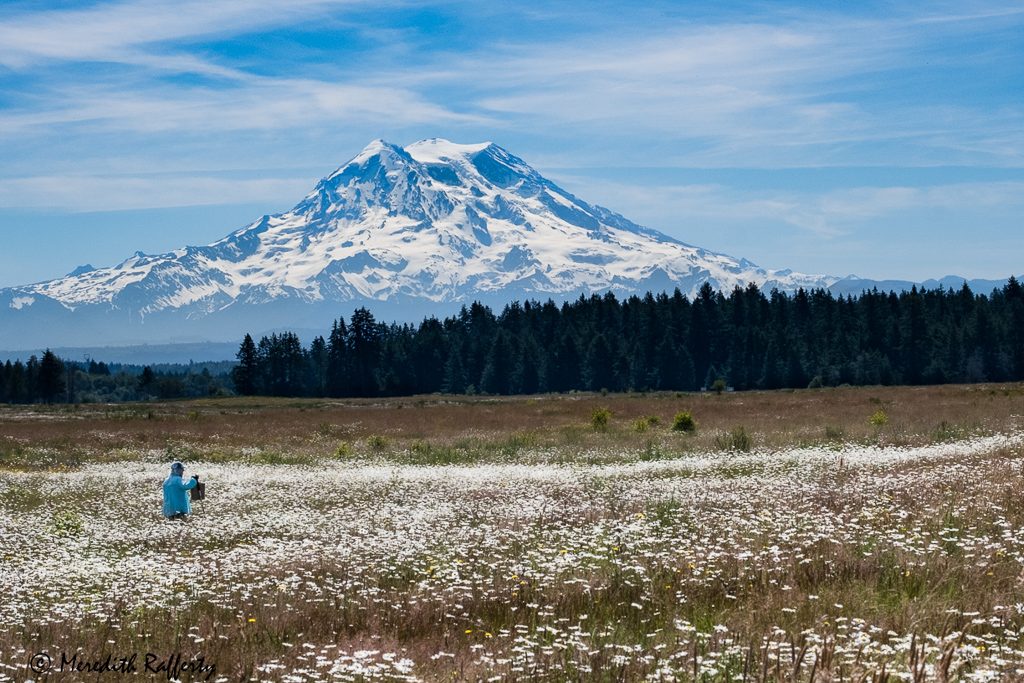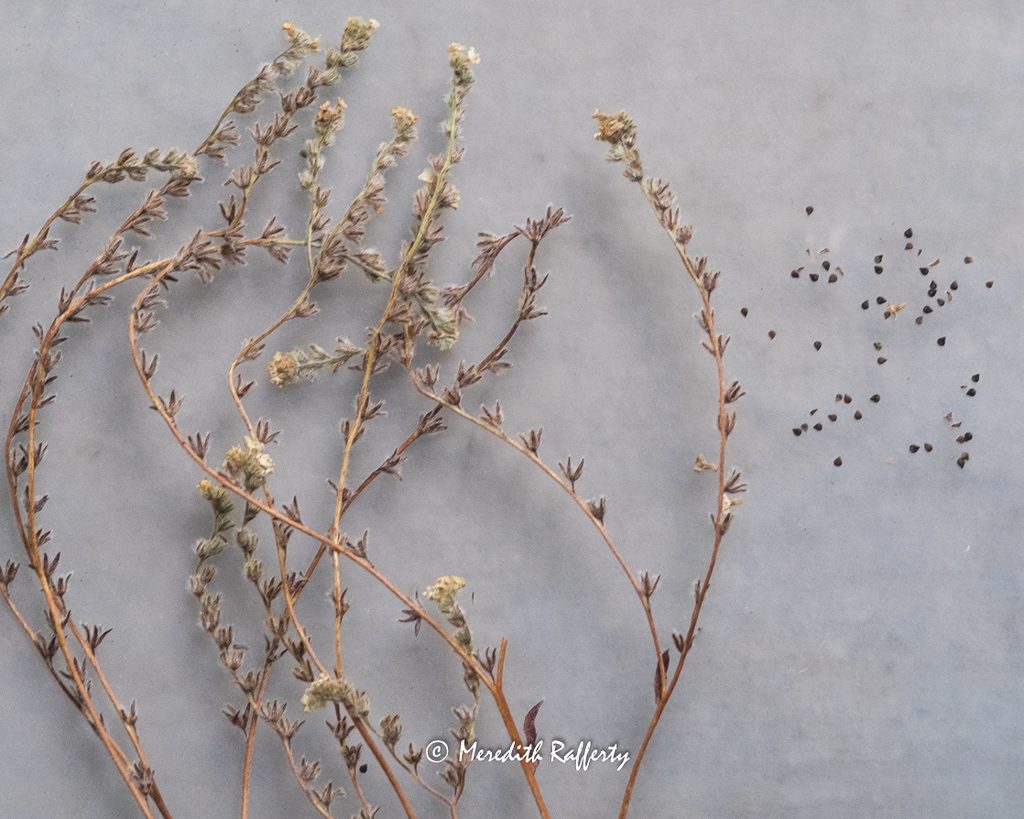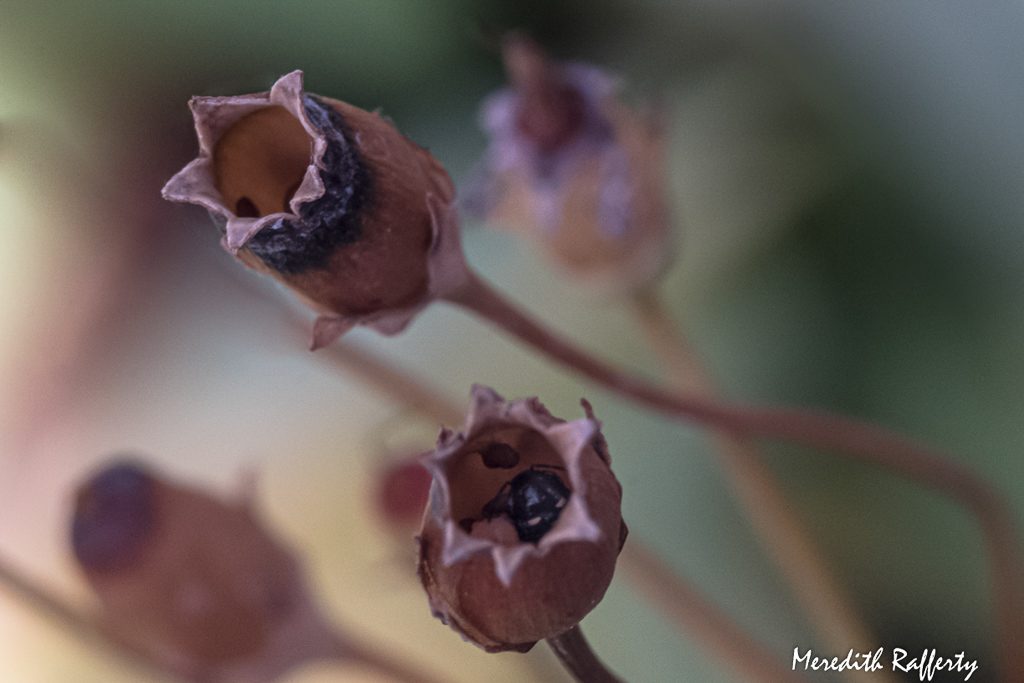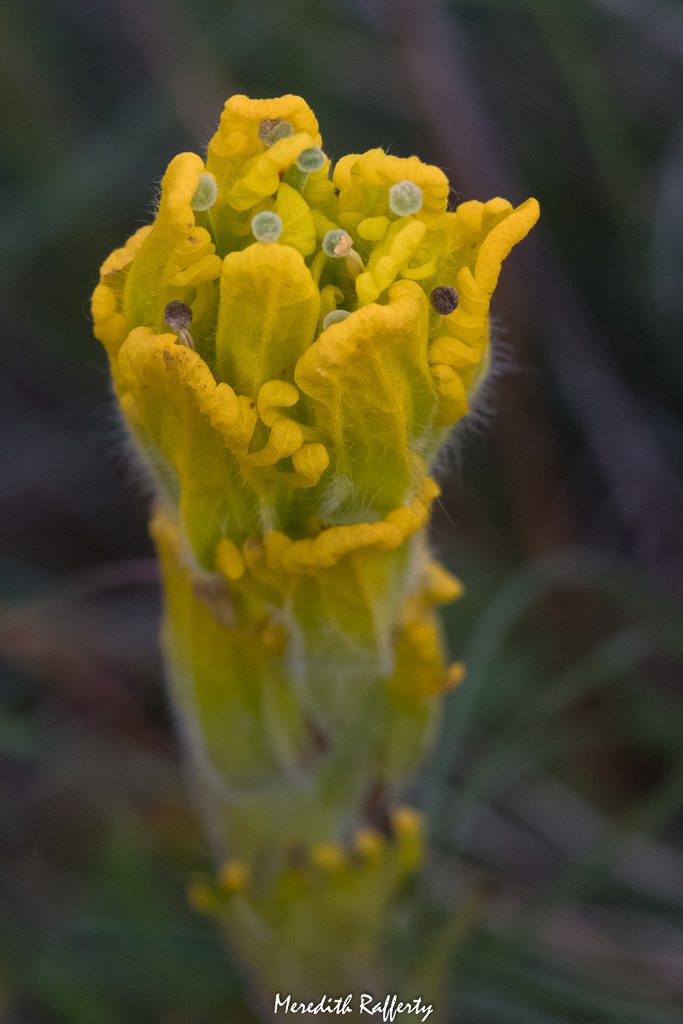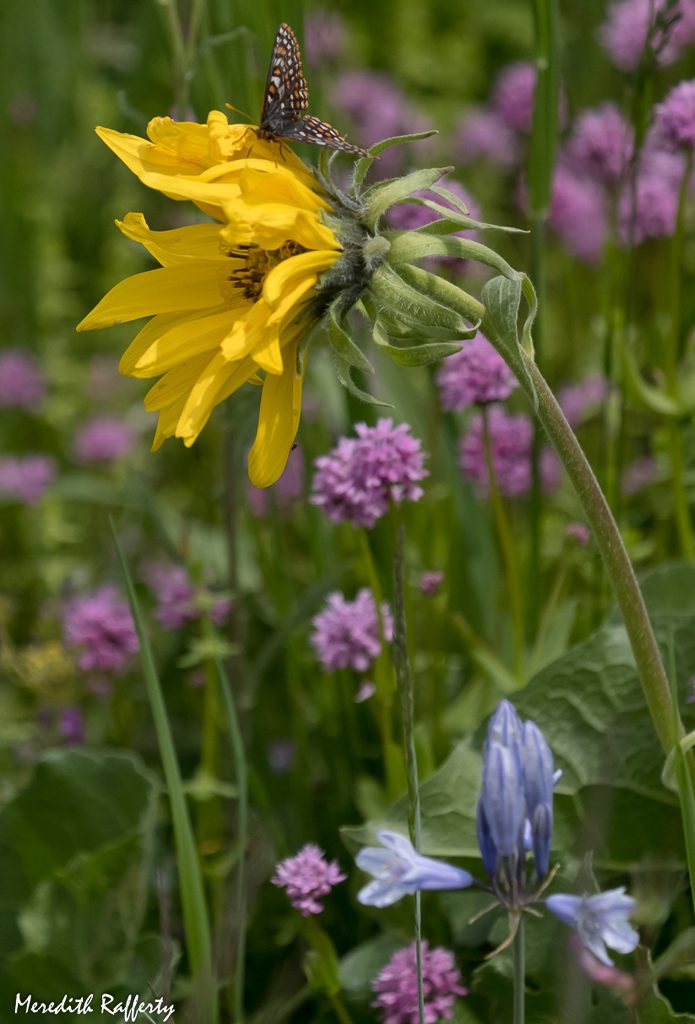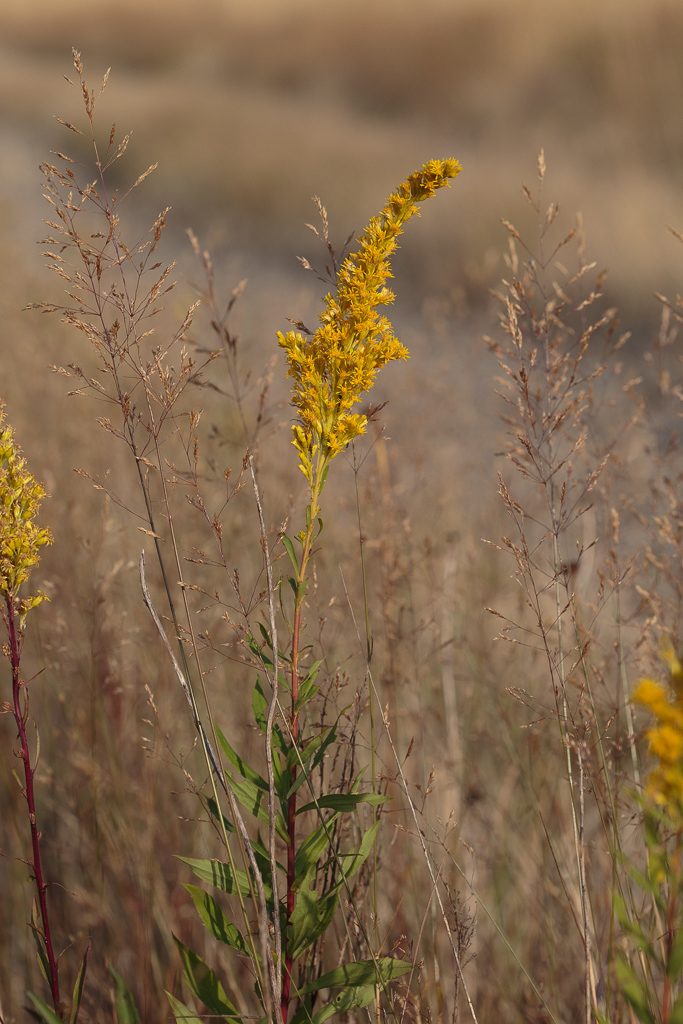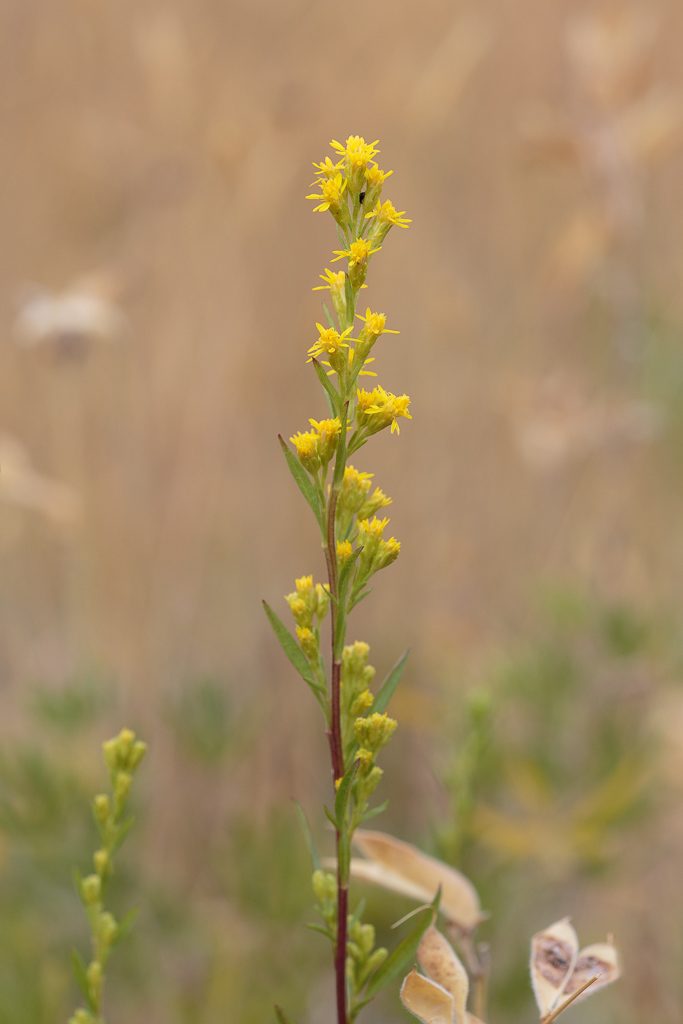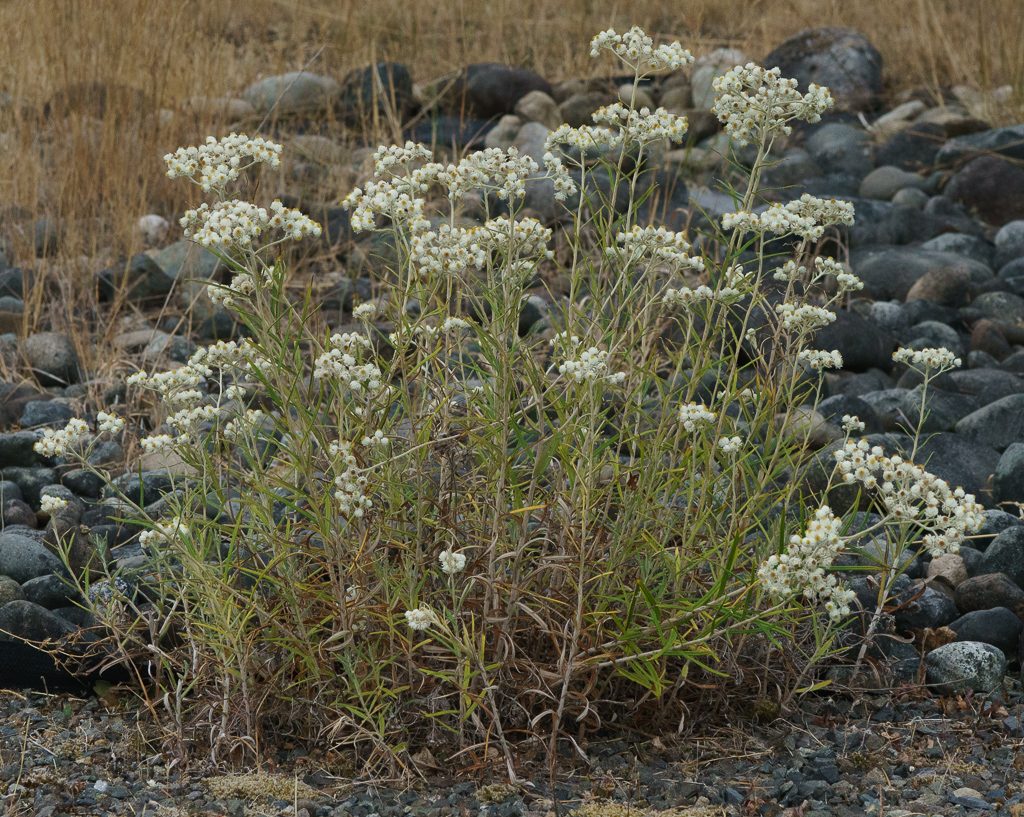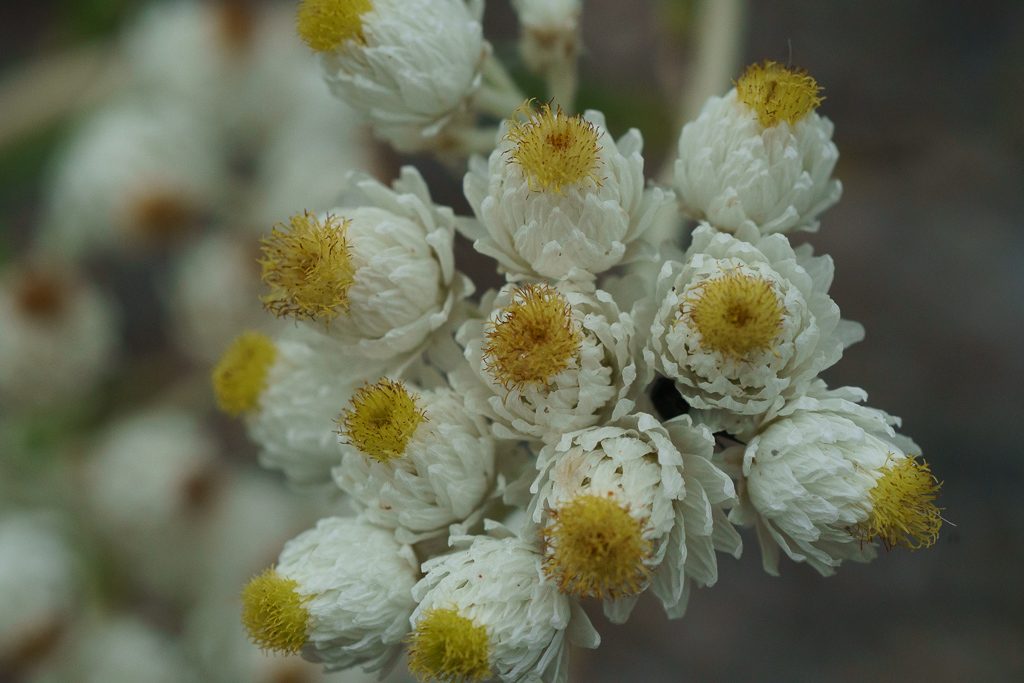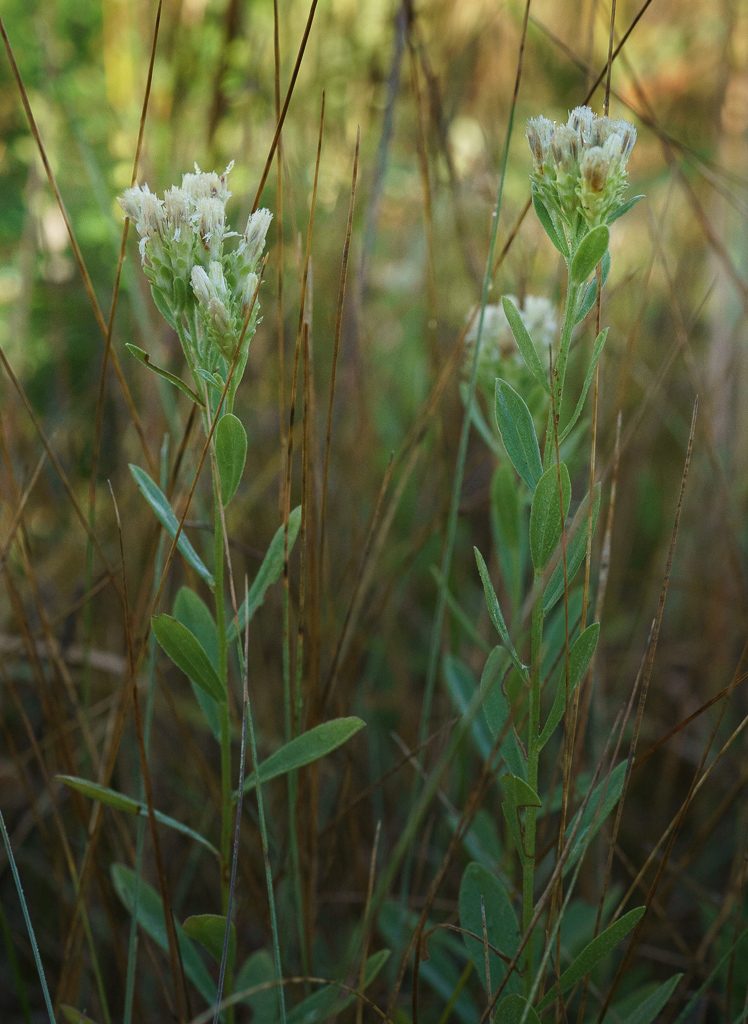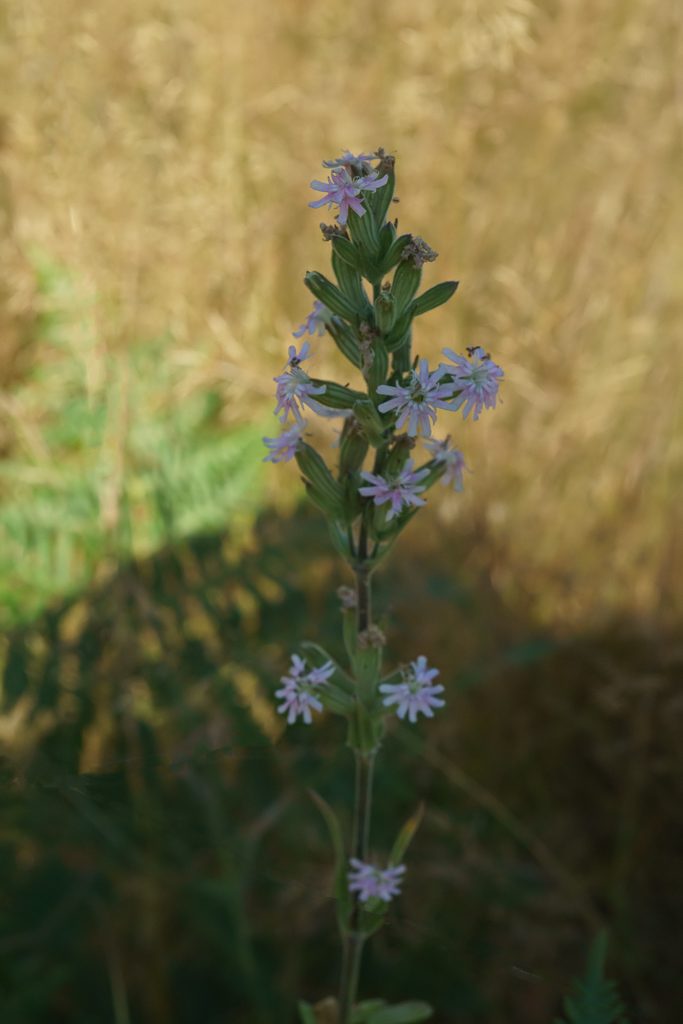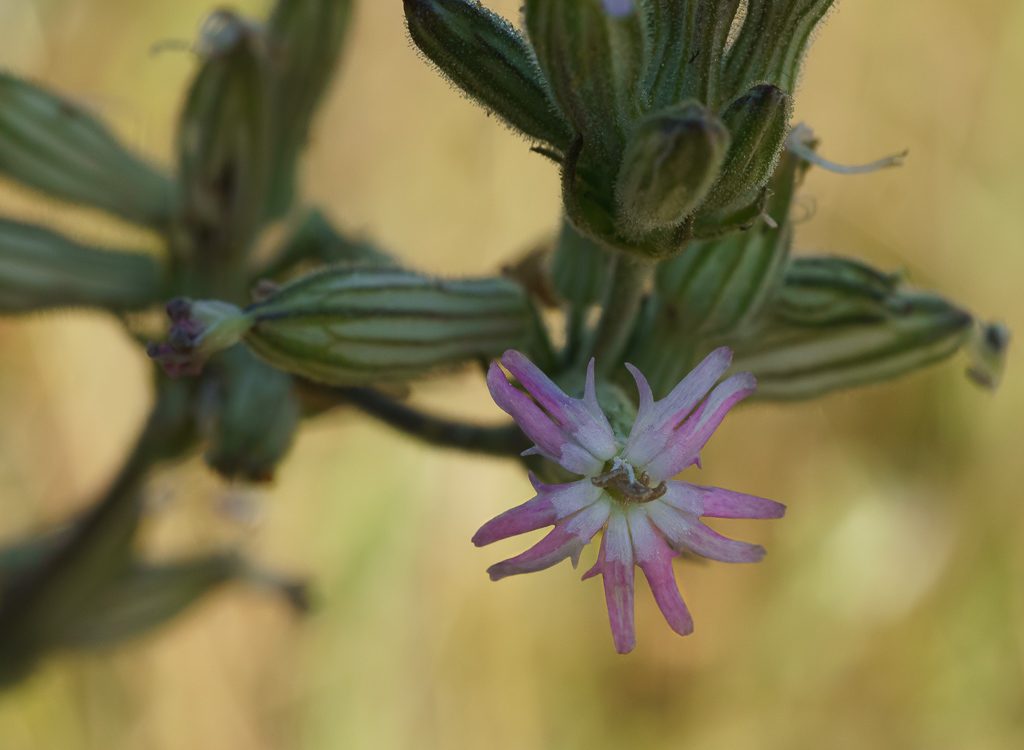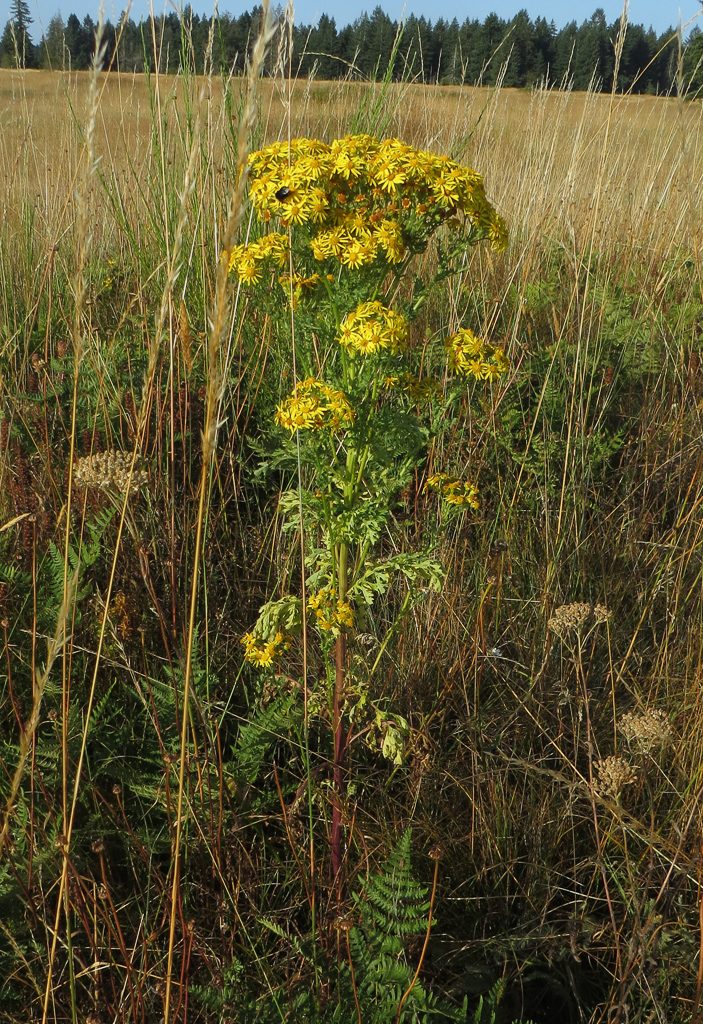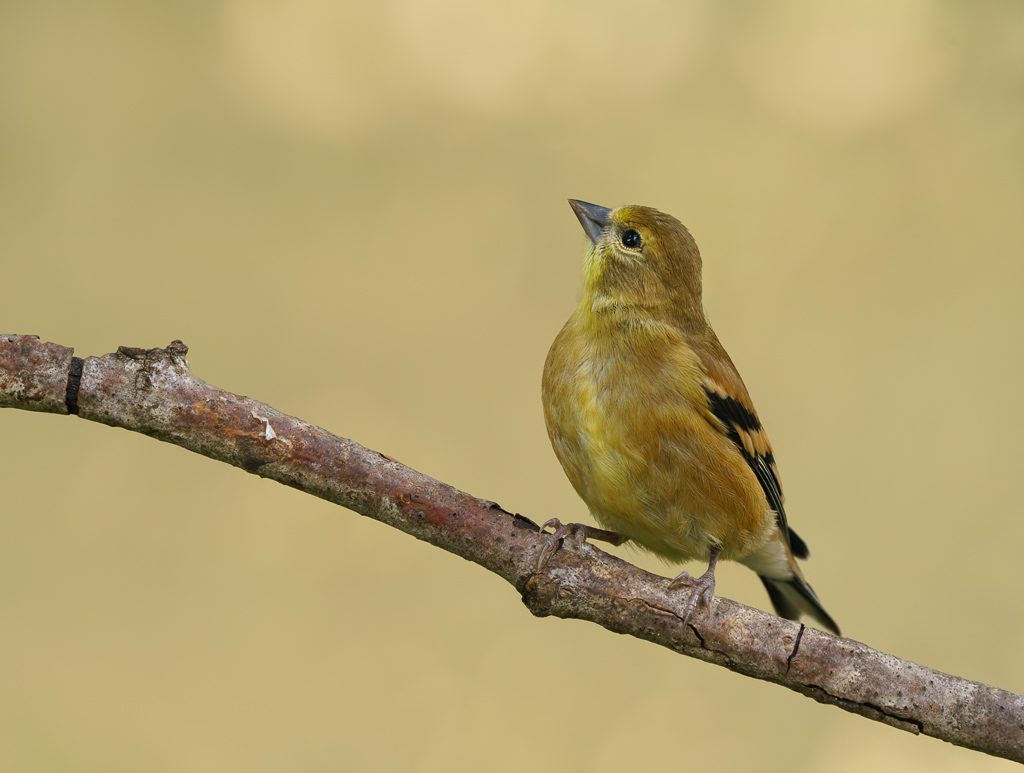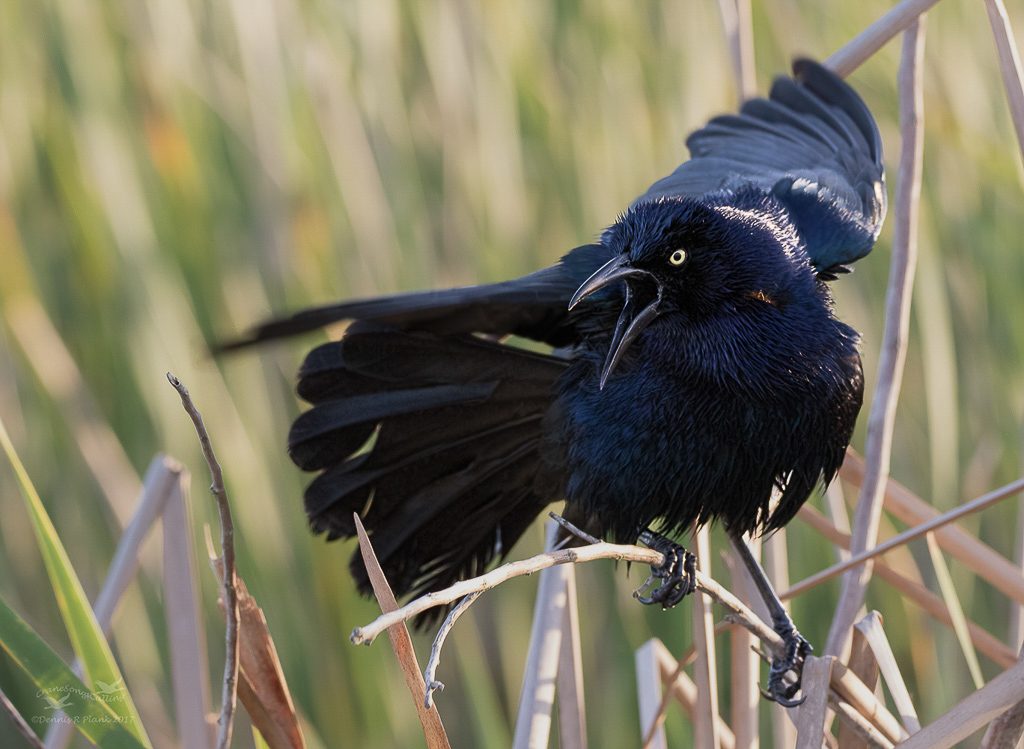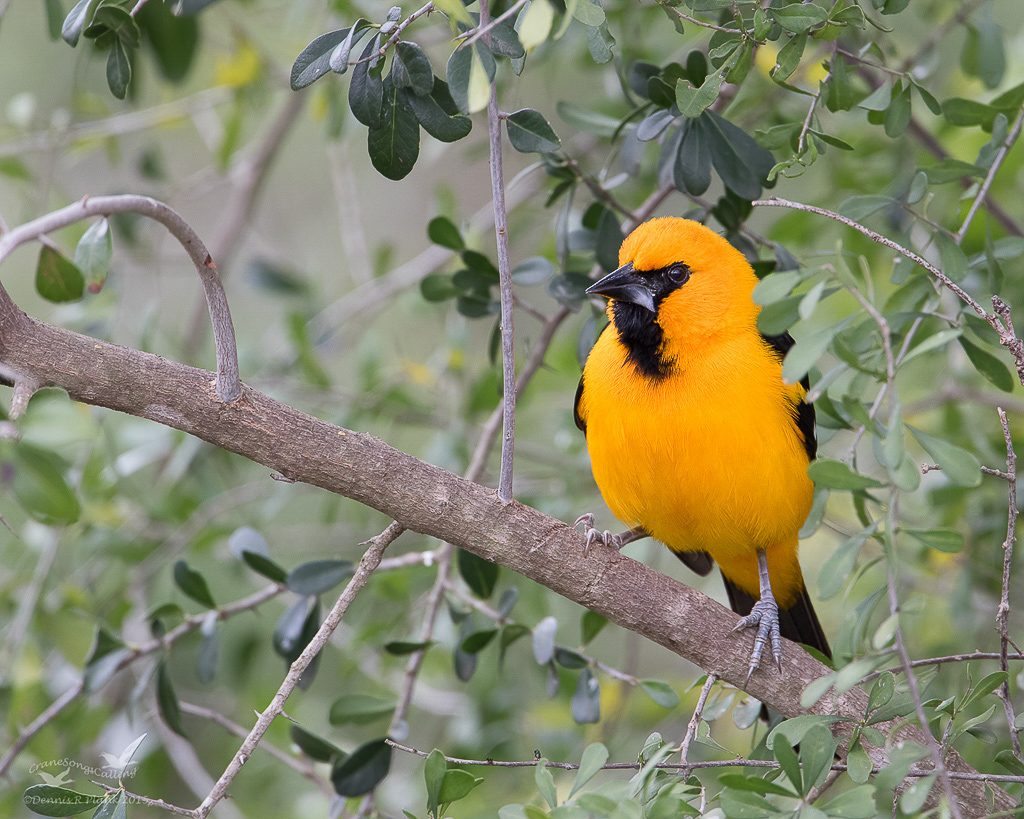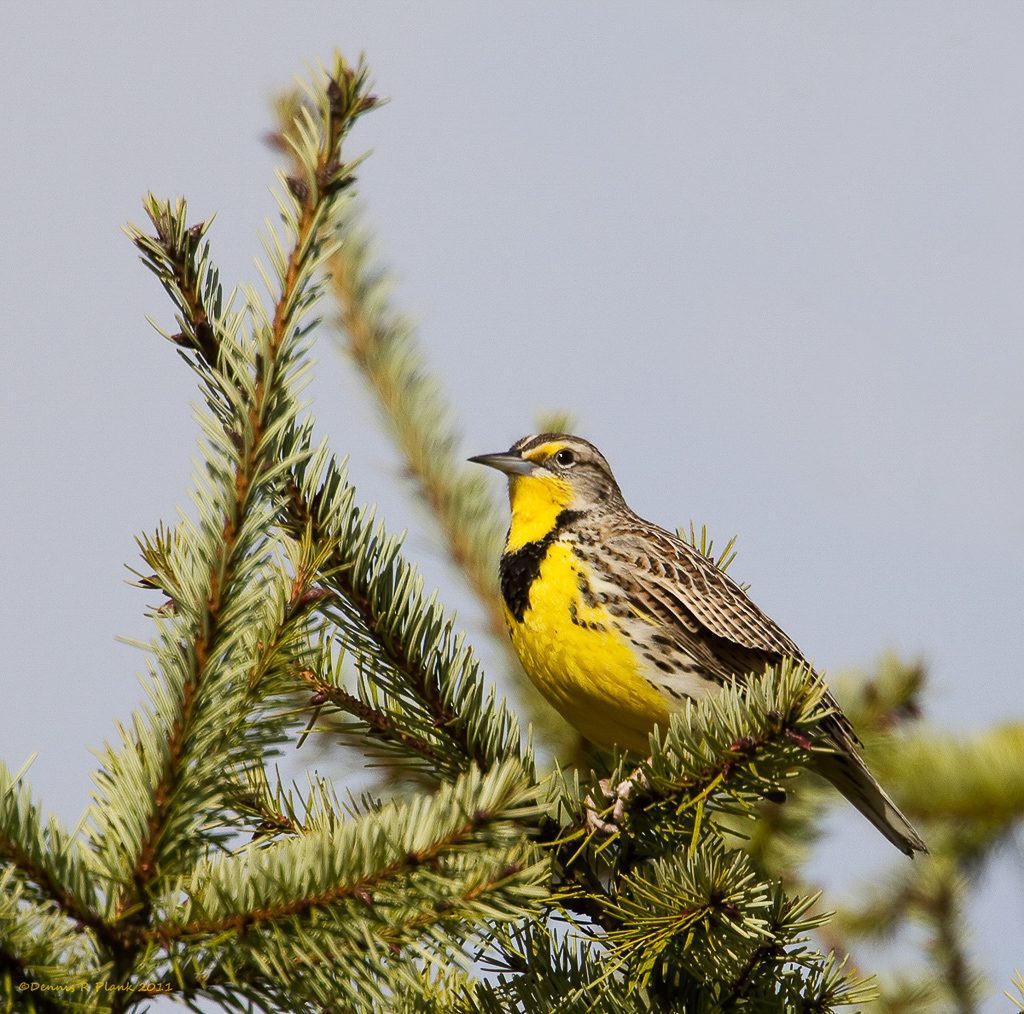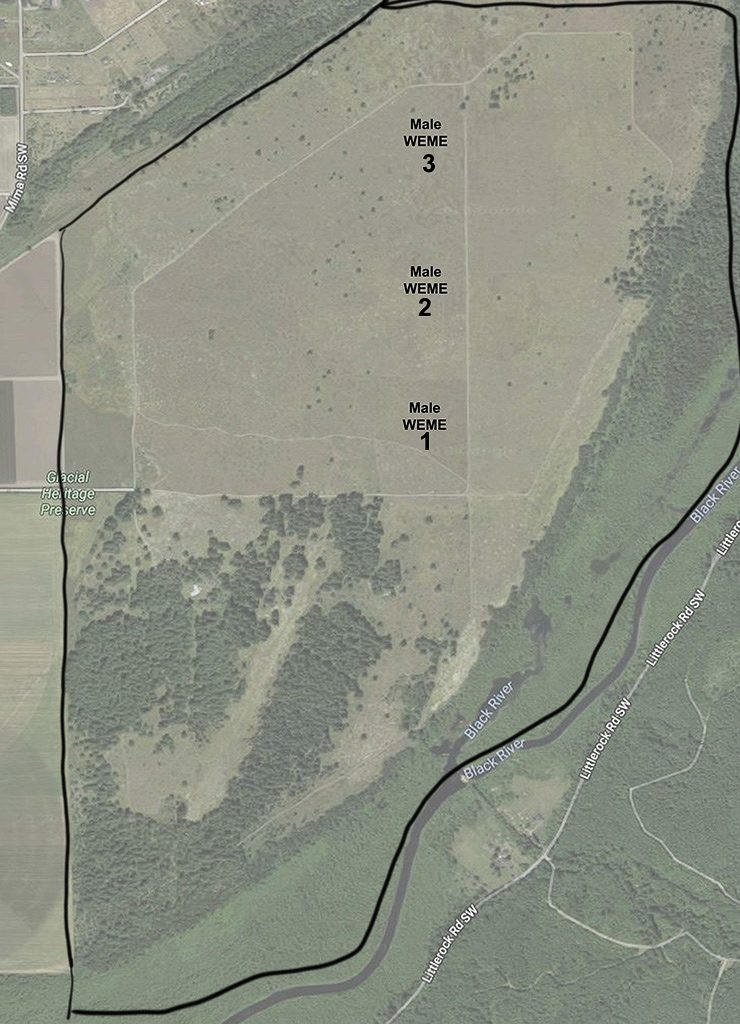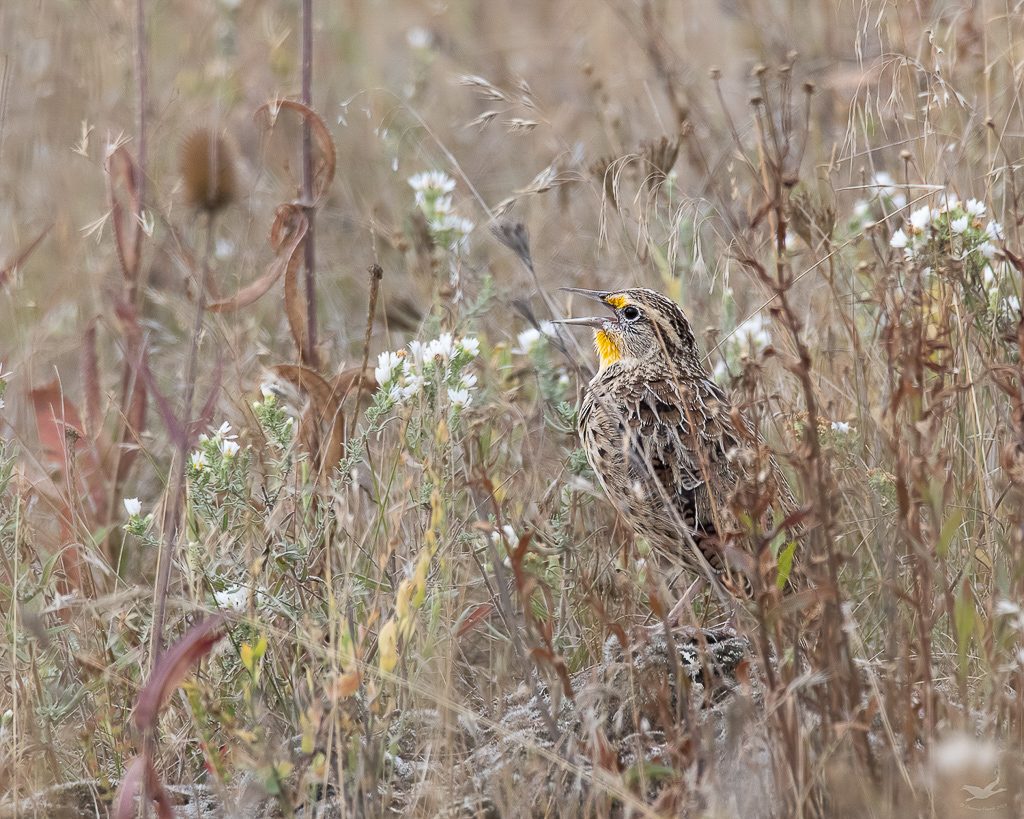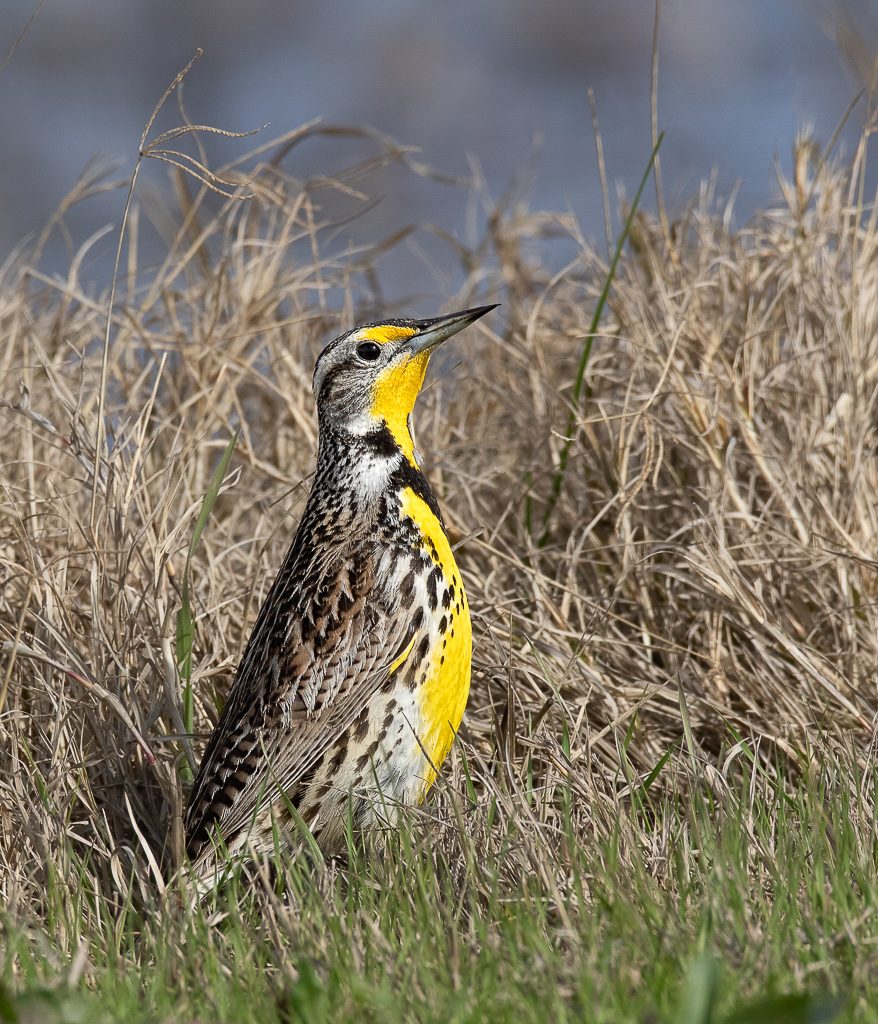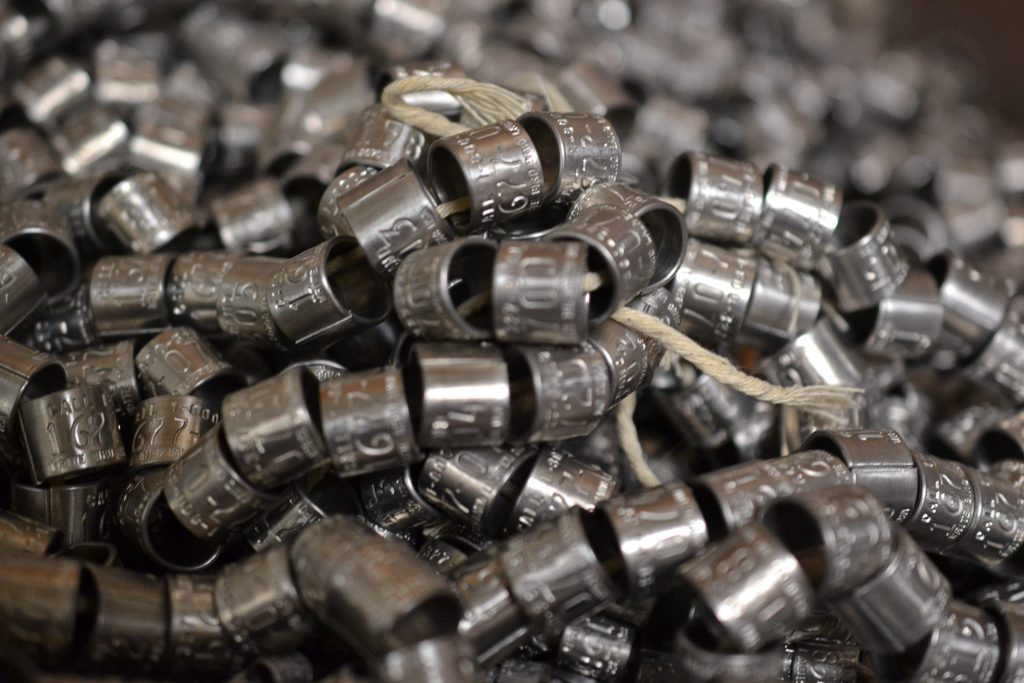Tansy Season, Post by Dennis Plank, photos as noted.
Dennis has been getting his knees muddy and his back sore pulling Scot’s Broom on the South Sound Prairies since 1998. In 2004, when the volunteers started managing Prairie Appreciation Day, he made the mistake of sending an email asking for “lessons learned” and got elected president of Friends of Puget Prairies-a title he appropriately renamed as “Chief Cat Herder”. He has now turned that over to Gail Trotter. Along the way, he has worked with a large number of very knowledgeable people and picked up a few things about the prairie ecosystem. He loves to photograph birds and flowers.
Tansy Season
A personal perspective
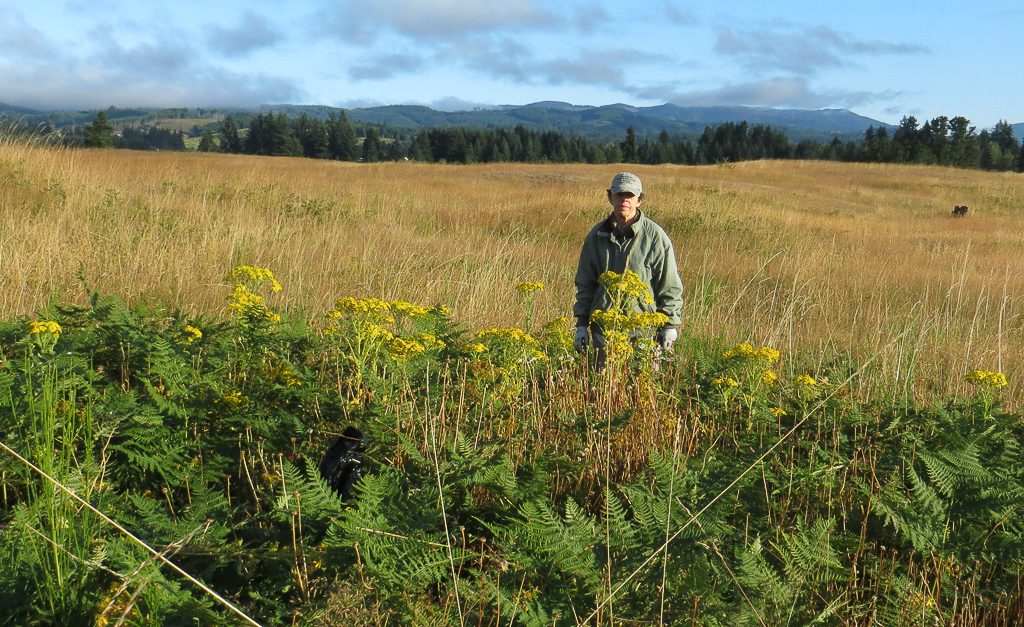
My wife, Michelle, eyeing a patch of Tansy earlier this year. Photo by Dennis Plank
July and August have become a very special time of year for me because of this plant. On the 6th of July my computer reminds me that “Tansy season is approaching”, a message that was quite unnecessary this year as I had already seen plants blooming on the access road to Thurston County’s Glacial Heritage Nature Preserve (hereafter Glacial) and had the pleasure of removing them.
About 14 years ago, one of our stalwart volunteers mentioned to my wife (an avid horseman) that he’d seen a lot of Tansy Ragwort on Glacial and shouldn’t she, as a horse person, do something about such a pernicious stock poison? The guilt trip worked, and she started single-handedly working on it. The first couple of years she collected the entire plants, bagged them and took them to the transfer station. If memory serves me correctly (it does so less and less as I get older), she had in excess of 40 garbage bags that first year and a similar amount the next. At the time, I was still working in Seattle and just down here on the weekends, so I think it was the third year when I started helping her on weekends and it wasn’t until I retired in 2012 that I started working it in earnest. For several years, it occupied three or four days a week in July and August. About the time we were burning out, the Center for Natural Lands Management assigned Angela winter as permanent volunteer coordinator, and she was more than willing to work at controlling Tansy on Glacial heritage and other preserves that they manage. The last three summers, we were surprised by a significant decline in the amount of this plant, which we attributed to the extremely dry conditions. Unfortunately, this year it returned with a vengeance.
Somewhere in there we realized that we really didn’t need to be taking the whole plant to the transfer station, just the flower heads. The native animals weren’t going to eat the bodies of the plants with so much else available. That reduced the number of bags to a small fraction of what they had been and was a great relief when working the interior parts of the preserve where it was a long way back to the road.
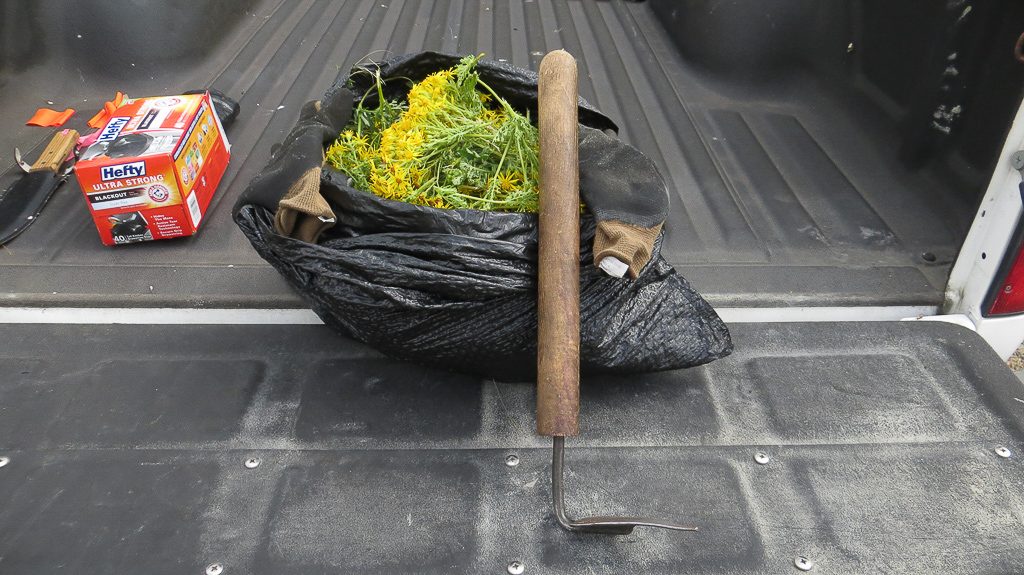
A morning’s haul of tansy blooms. Photo by Dennis Plank
For me this two month period has become a time of hard work, a little frustration, a little satisfaction and a whole lot of joy. The hard work part is obvious. The frustration comes because at times (like this year when we’re having a bad year for weeds in general and Tansy in particular) it seems like we’ll never get anywhere. The satisfaction comes because I can look back at what it was like when I first started helping and see that there really has been an improvement. The joy comes because I have a wonderful excuse to be out on the prairie early in the morning, alone with the flowers, birds and bugs, doing something that I consider very worthwhile.
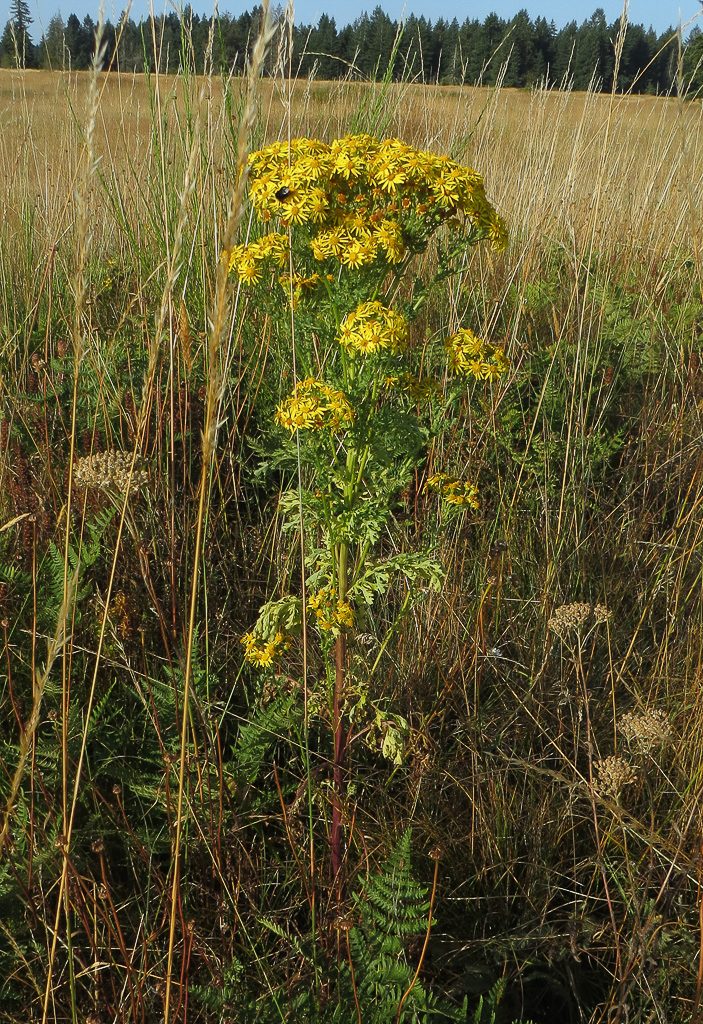
A very healthy specimen. Photo by Dennis Plank
So what’s with Tansy Ragwort?
Tansy Ragwort, Senecio jacobaea, is a plant in the sunflower family native to Europe, western Asia and northern Africa and since spread by us to nearly every corner of the world. Like many composites, it is extremely successful. A single plant can produce 150,000 seeds and they can either sprout the following year or lie dormant for at least 10 years if conditions aren’t right. Additionally, the roots, which penetrate up to one foot in the ground have many adventitious buds that can sprout new plants if the parent is uprooted. The plant is listed as a biennial, but a large percentage of plants act as if they were perennials, particularly if they are cut or otherwise disturbed. In good years for the plant (bad years for us) it can form very large, nearly mono-cultural patches in disturbed soils. This year’s outbreak is also in Oregon. The image below was taken in Clackamas county.
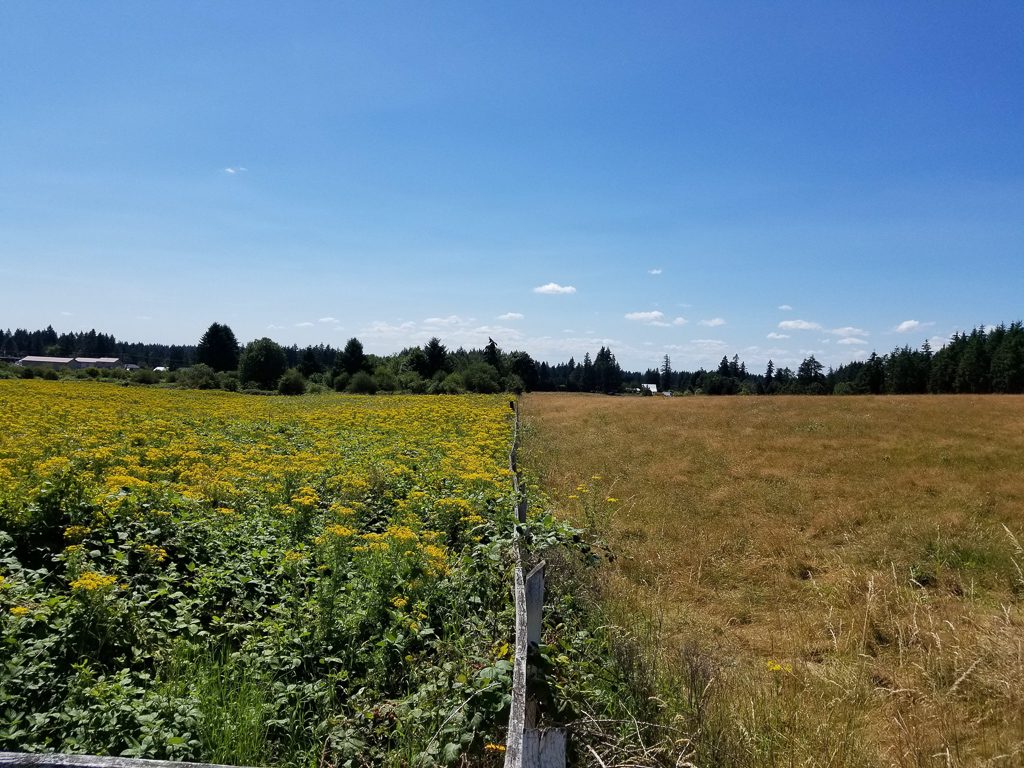
A Tansy field in Clackamas County Oregon earlier this year. Photo by Samuel Leininger WeedWise Manager Clackamas Soil & Water Conservation District
If it were just a prolific weed, we might treat it like we do Oxeye Daisy or Hairy Cat’s Ear and pretty much live with it. However, all parts of this plant contain Pyrrolizidine alkaloids that accumulate in the liver and are poisonous to deer, horses, cattle and goats, but apparently not to sheep which are used in New Zealand as a control for the plant. Most animals will not eat the plant if there is anything else. I’ve seen people’s horse pastures in this county completely devoid of all vegetation except clumps of this plant four or five feet tall that are completely undisturbed. However, if it’s in a field that is mowed for hay, the plant will still contain the toxins after drying and animals will inadvertently ingest it. At various times, there have been outbreaks of sickness and death in cattle and or horses in various parts of the world that achieved their own disease names (Stomach Staggers in Wales, Pictou disease in Nova Scotia, in South Africa Molteno disease for horses and Dunziekte for horses, and in Norway Sirasyke) before someone figured out that they were just Tansy poisoning from tainted hay. And it’s not something that’s over. I see people with small hay fields and Tansy growing in them that are being mowed and baled in this county. Unless someone is going out the morning they mow and pulling the Tansy, it’s getting in the hay. Since the toxins are in the flowers and pollen as well, they also taint honey from bees that use the plant in any quantity and can actually make the honey carcinogenic.
It seems as if people have a fascination with toxic plants and they become a part of folklore and folk medicine. Tansy Ragwort is no exception to this. In Britain and other areas it was used extensively in folk medicine where an ointment was made by boiling it in hog grease and applied to arms legs and hips for joint pain. One source I ran across quotes: “A poultice made of the fresh leaves and applied externally two or three times in succession ‘will cure, if ever so violent, the old ache in the hucklebone known as sciatica’.” It was also used as a mouthwash for canker sores and ulcers of the throat. The wide use and knowledge of the herb led to lots of interesting colloquial names such as: St. James his wort, stagger-wort, staner-wort, ragwort, ragweed, curly doddies, stinking nanny (have I mentioned that it smells), dog standard, cankerwort, stavewort, kettle dock, felonweed, fairies horse, stinking willy, mares fart, cushag, fleawort, seggrum, jacoby, and yellow top. In places, it also became associated with witchcraft and references are made to witches riding stems of it instead of brooms.
The good side of Tansy Ragwort
On the South Puget Sound Prairies, most of the more prolifically flowering plants have gone to seed by the middle to end of July and nectar sources for late season butterflies and other pollinators are in short supply. People doing butterfly surveys say that this time of year the best place to find butterflies is the patches of Tansy. For this reason, some of the state agencies have decided to control it when it might affect neighbors, but leave it to the bio-controls when it’s on the interior of their properties.
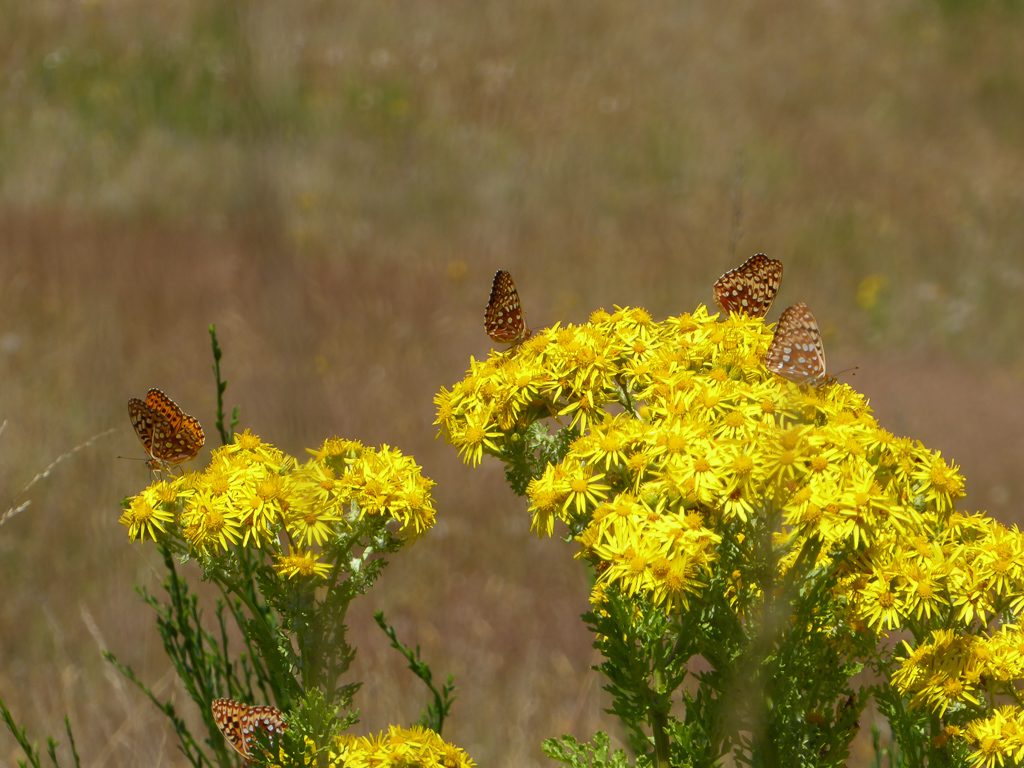
Zerene fritillaries nectaring on Tansy Ragwort at Mima Mounds Natural Area, Photo by Brad Gill.
Tansy is also heavily used by Crab Spiders. These little beauties lie in wait on the flower heads where their color blends in very well and ambush pollinators that come in to nectar on the blossoms.
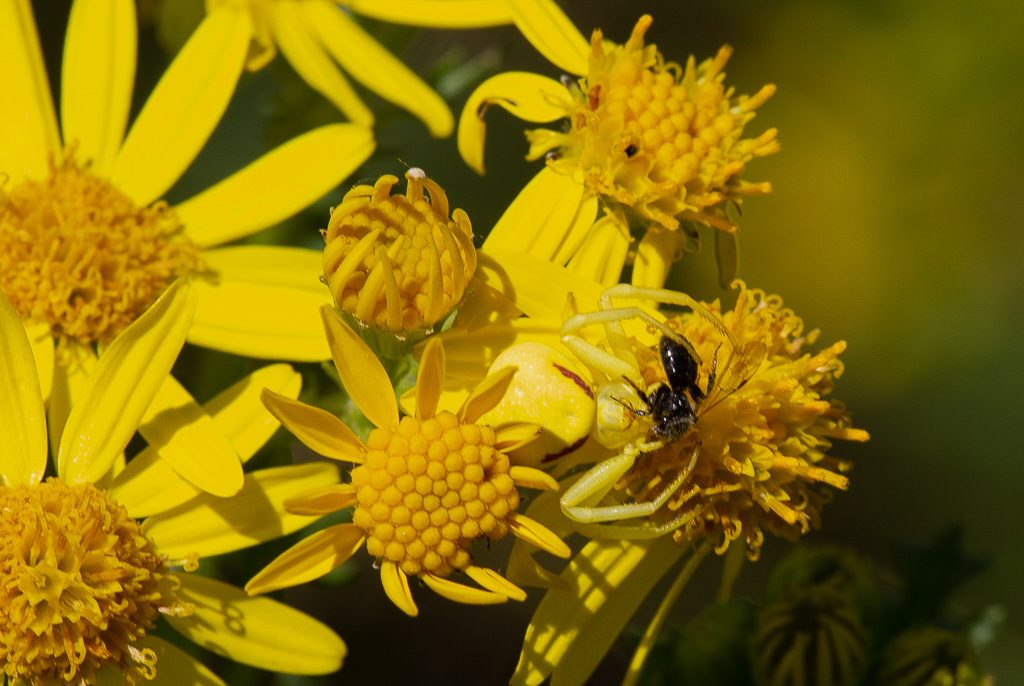
Crab Spider with Prey, photo by Dennis Plank
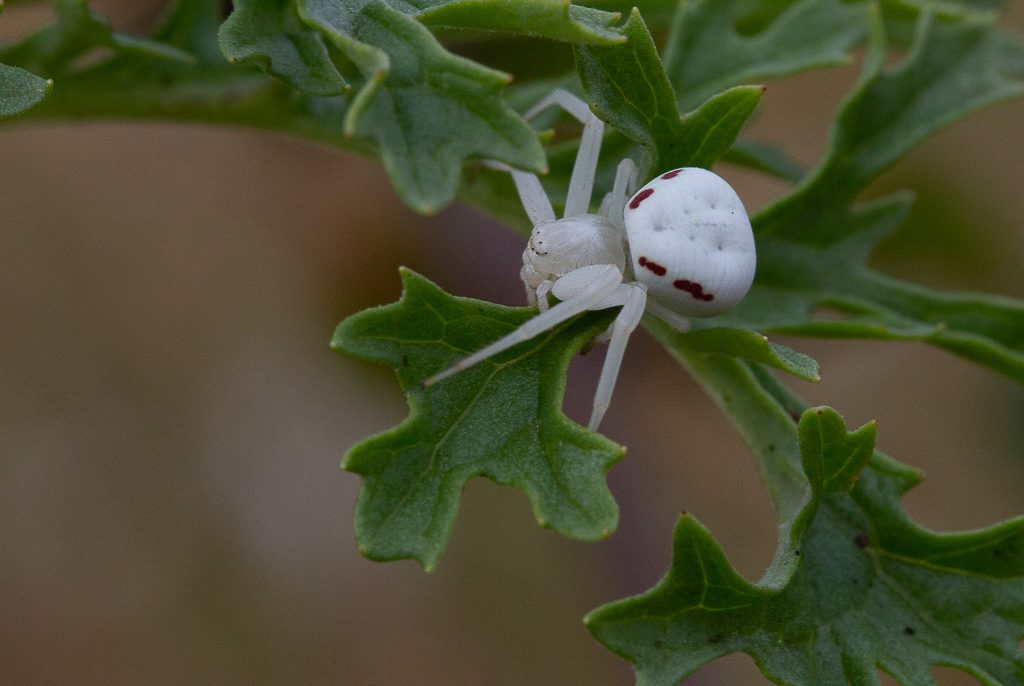
This crab spider didn’t get the dress code message, photo by Dennis Plank
Many other insects also use Tansy on occasion, such as this Great Golden Digger Wasp.
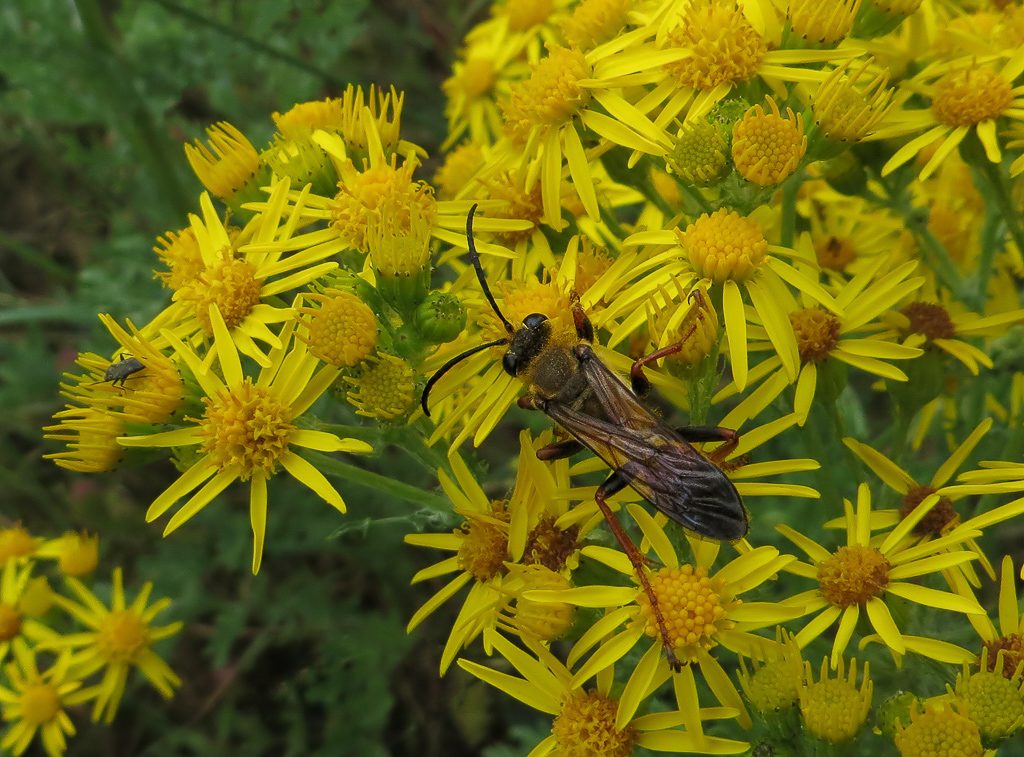
Great Golden Digger Wasp, photo by Dennis Plank
Identification and Control of Tansy Ragwort
Like most plants, once you get the image in your head, it’s pretty easy to separate this plant from just about anything else. The closest look-alike is Common Tansy, which is easily mistaken driving 50 mph and seeing it in the ditches. On closer inspection, the single stems with flat clusters 3-4 inches in diameter and the absence of ray flowers on the composite blooms makes the Common Tansy easy to distinguish.
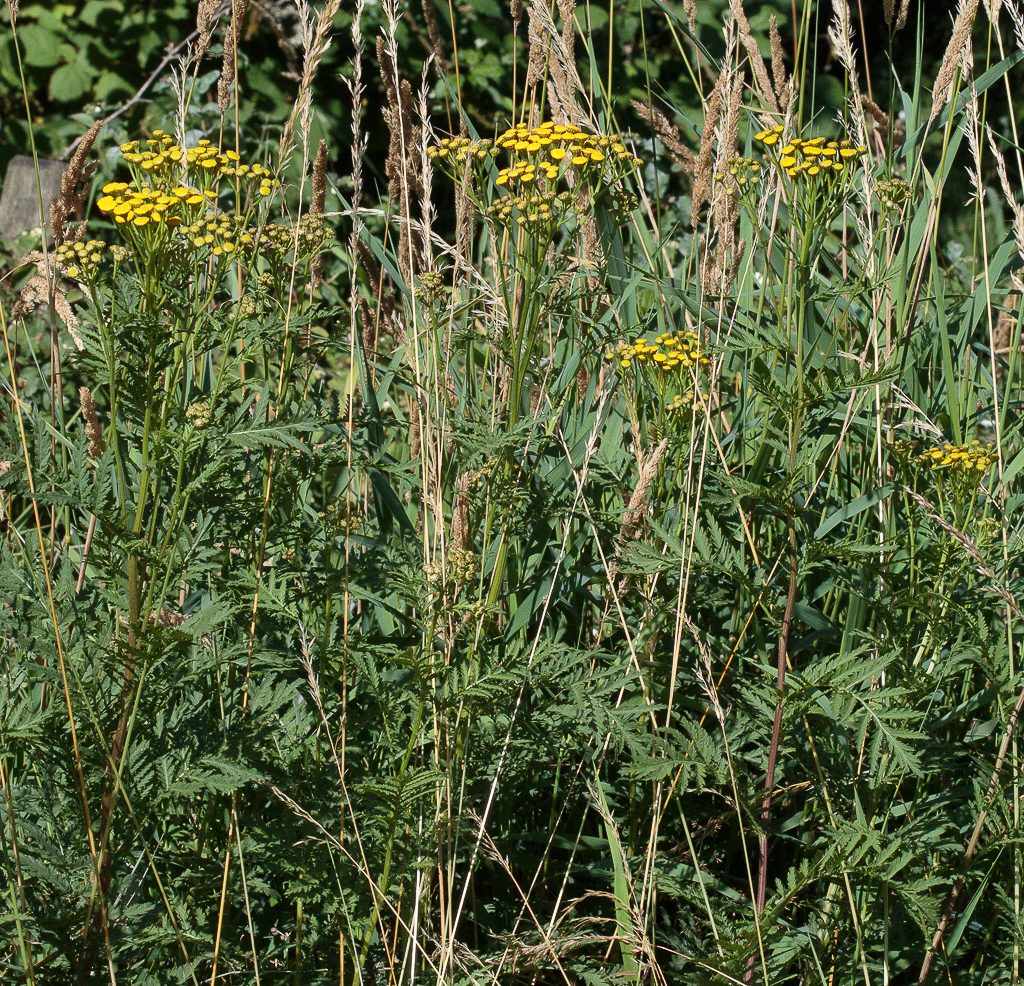
Common Tansy on a roadside in south Thurston County, Washington, photo by Dennis Plank.
St John’s Wort would never be mistaken for Tansy Ragwort when seen close up, but when we’re on the prairie trying to find tansy, we are often looking several hundred yards away and the colors of the blooms are quite similar. The key is the shape of the bloom head. Tansy looks almost flat at a distance, while St John’s Wort tends to be more rounded and less dense. I‘ve traipsed quite a ways only to realize I was after the wrong weed. We had one St. John’s wort that fooled us for most of the season a few years ago. I finally got frustrated and pulled it. It may seem odd to take binoculars to pull weeds, but they save a lot of walking. Even a yellowing fern leaf turned the right way can look like a Tansy bloom head when it’s a couple of hundred yards away.
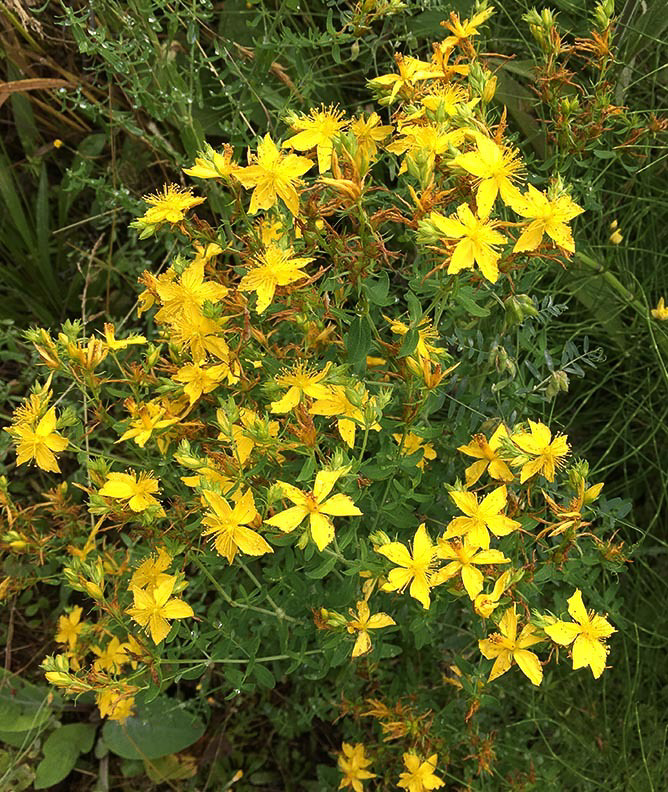
St. John’s Wort, photo courtesy of Washington State Noxious Weed Control Board
Common Groundsel is another plant that somewhat resembles Tansy Ragwort in the leaf structure, but when it blooms the flowers are very small and never open very far. It is an annual and seems to have great seed life as it is common to have a flush of it the first year or two after a fire. The Center for Natural Lands Management used to use Americorps volunteers as their volunteer coordinators and we had one, who shall remain nameless, who insisted we rip out a huge patch of Groundel on a rainy, ugly day under the mistaken impression that it was Tansy Ragwort. I’m not sure I’ve forgiven her yet.
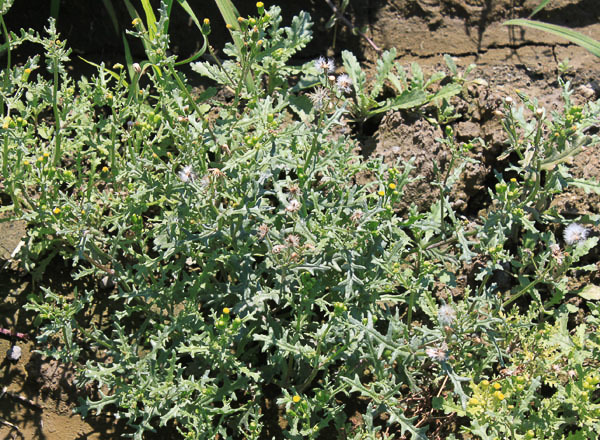
Common Groundsel, photo courtesy of Washington State Noxious Weed Control Board
The final look-alike is only a problem when the plants are very small. That’s the Oxeye Daisy. The young rosettes of the species do bear a superficial resemblance, but it doesn’t take very much practice to start distinguishing the two.
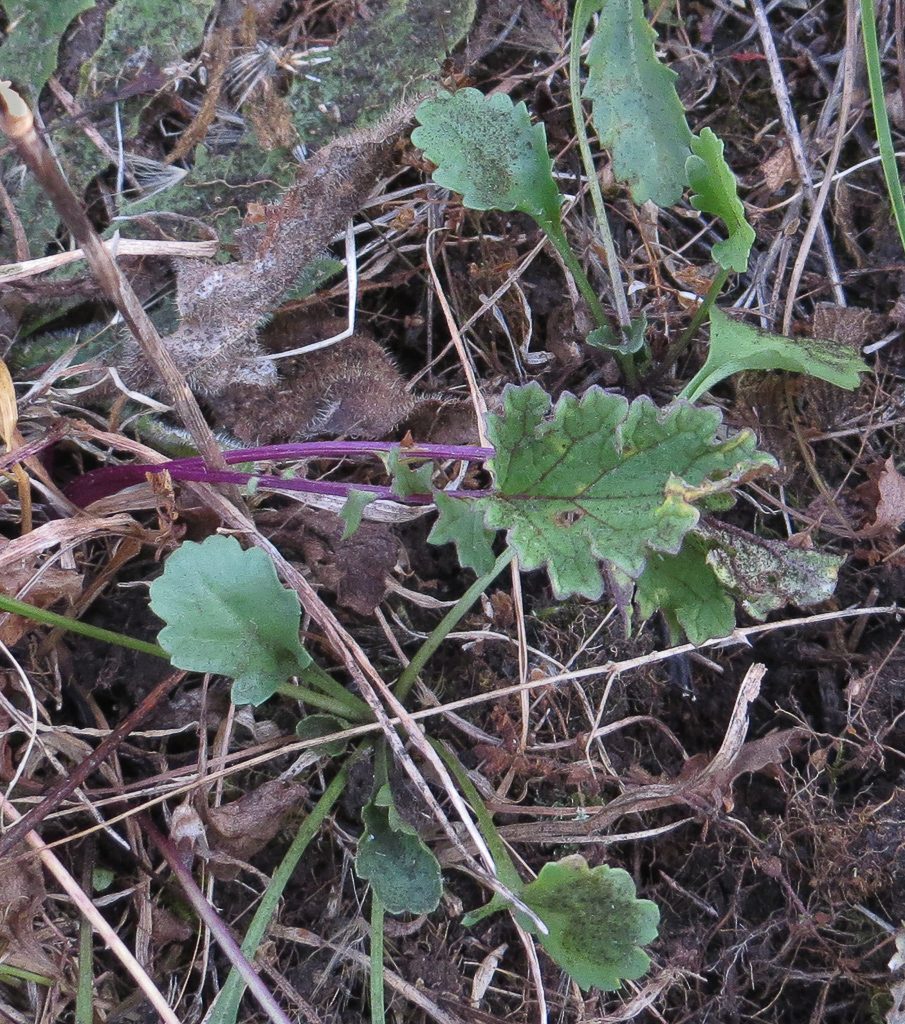
Tansy and Oxeye Daisy rosettes side by side. Note the purple stems on the Tansy. Photo by Dennis Plank
Three bio-controls have been introduced in the Western US since 1959 to combat infestations of Tansy Ragwort. The first of these is the Cinnabar Moth first introduced in California in 1959. It is well established in Washington and Oregon. The moth lays its eggs on the underside of rosette leaves and the larvae eat all above ground parts of the plant, sometimes causing sufficient damage to kill it, though more often just setting it back for the season. The larvae seem particularly fond of the blossoms. Unfortunately, like most bio-controls, the population of the moths depends on the population of the Tansy, so it is most effective when there are huge infestations of the weed. When the infestation is patchy, we see relatively few plants with Cinnabar larvae (often called Tansy Tigers for their coloration) on them. Also, unless the numbers of larvae are extremely large, our experience has been that the denuded stems left by the Tigers will releaf and rebud later in the season and often produce late season flowers and seeds just when we’re very tired of looking for the plant and have let down our guard.
One of the down sides of the Cinnabar moth is that it will use a couple of native plants for as hosts for the larvae including Packera Macounii, commonly known as Siskiyou Mountain Ragwort, Macoun’s Groundsel, or Puget Groundsel.
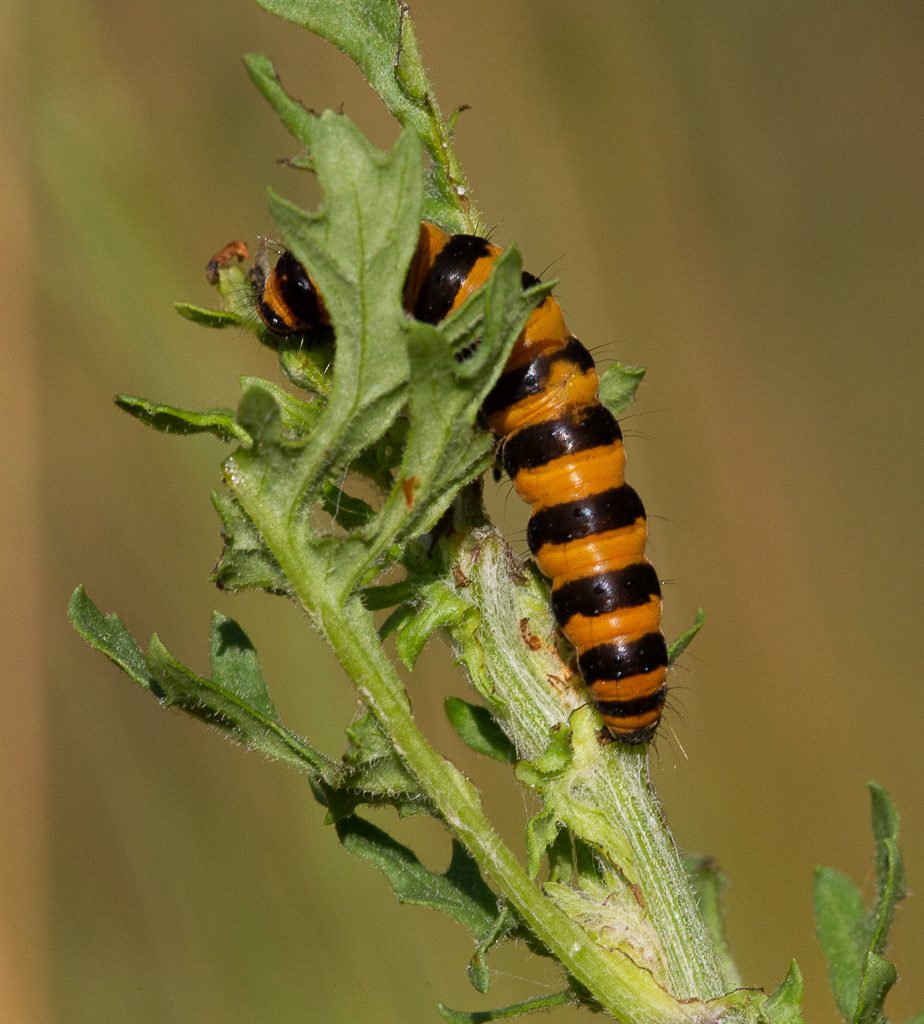
Cinnabar Moth Larva (aka Tansy tiger) hard at work, photo by Dennis Plank.
The second of the bio-controls is the Ragwort Seed Fly (Botanophila seneciella) introduced in California in 1966 and present throughout the Pacific Northwest. This fly lays its eggs on the flower buds and the larvae dig into the bud and set up housekeeping near the base of the bud where they happily eat the entire flower. I just noticed these this year, though I’m sure they’ve been around before. They are detectable by a brown spot in the middle of the disc flowers often with some bubbles on it. The spot increases in size until the entire disc is brown and the ray flowers disappear. Unfortunately, studies have shown that only 10-40% of the flowers are predated by the bud fly larvae.
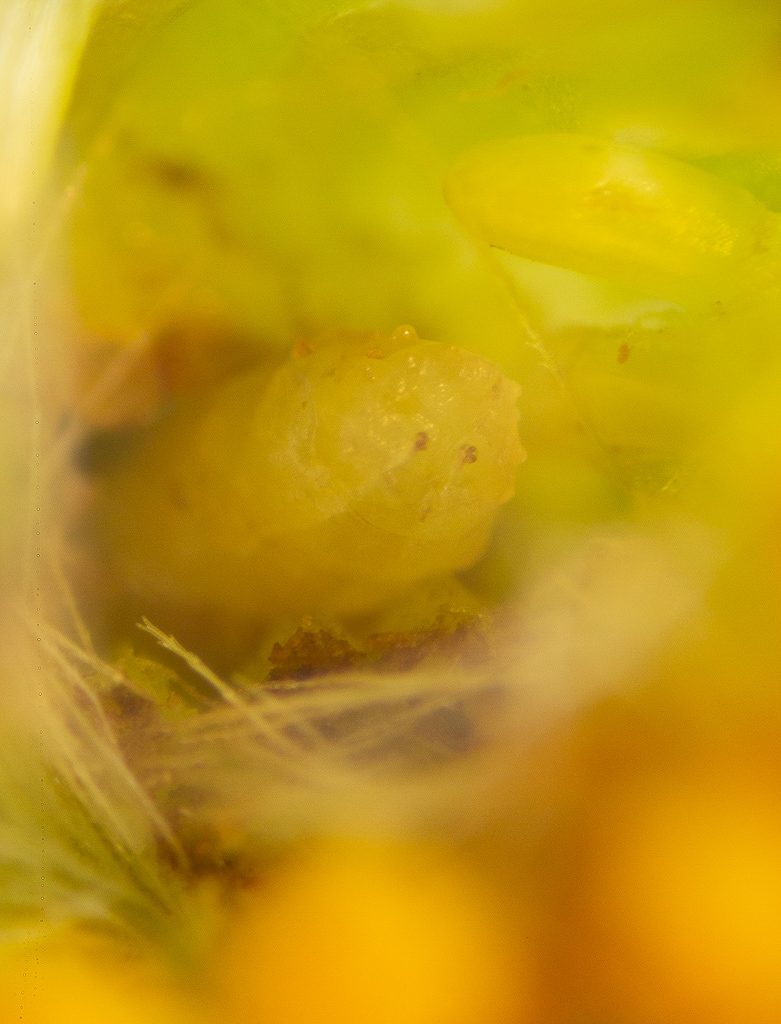
Tansy Seed Fly Larva. Microscope photo taken by teasing away the outer parts of the seed head. Photo by Dennis Plank.
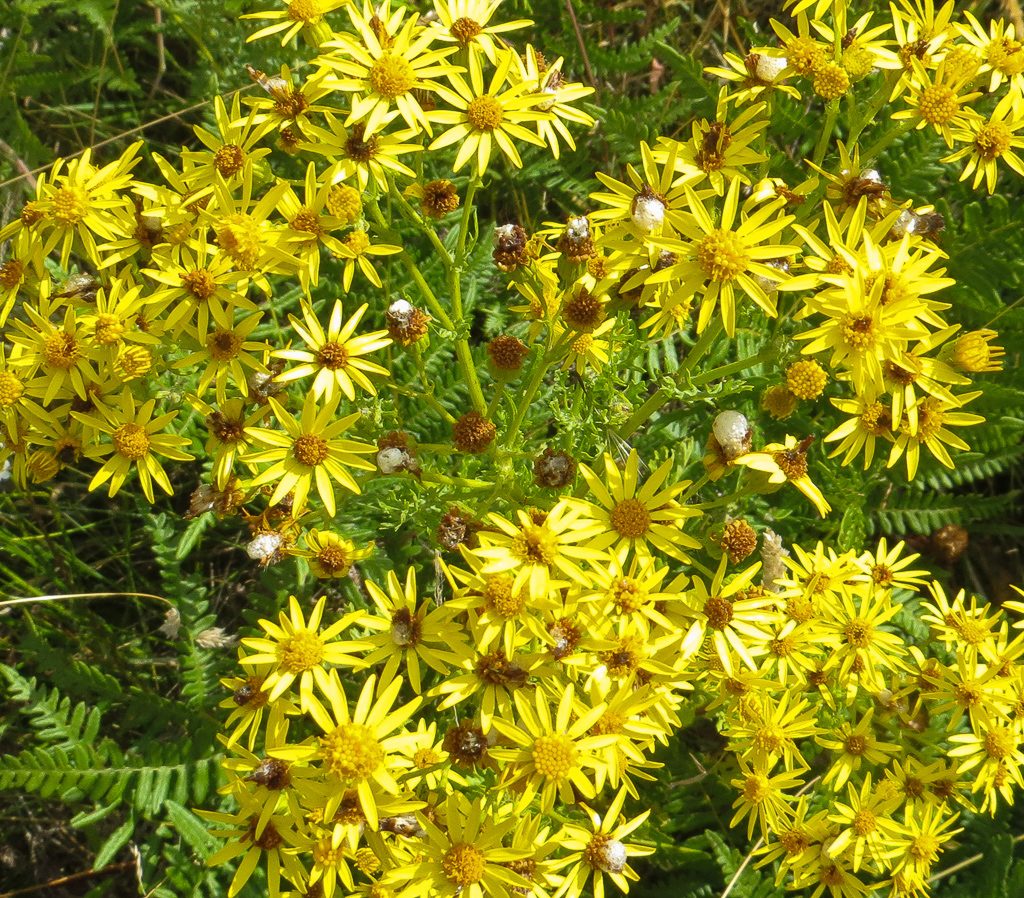
Flower head predated by Seed Fly Larvae, photo by Dennis Plank.
The third bio-control is the Ragwort Flea Beetle, Longitarsus jacobaeae. This species is primarily effective at the rosette stage where the larva attack the roots and the adults eat the leaves producing an effect called “shot holing” where the leaves are heavily perforated with BB size holes. Some people consider this the most effective of the bio-controls since the larvae attack the root crown over the winter and early spring and a late spring dry stretch can actually kill the weakened plants. I’m sure we have this beetle, but I’ve yet to identify it on a plant.
Mowing and cutting are not effective means of control as they essentially move the life cycle of the tansy into the perennial mode. One local land manager, has a practice of just breaking over the bloom stem, leaving it attached. Our experience with this technique is that unless it is done perfectly, it doesn’t kill the flowers and they still go to seed. Also the plant can continue to put out new flower heads after the first is broken.
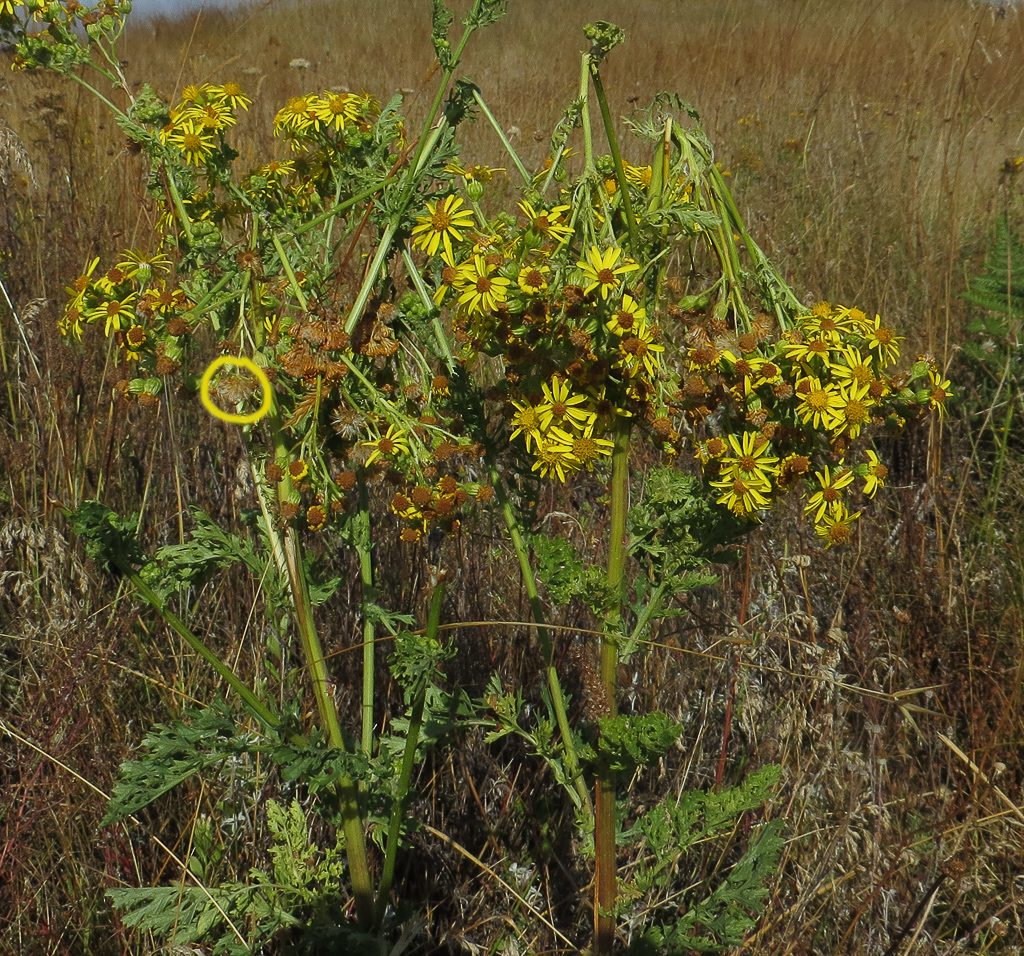
Tansy plant that had the heads broken over and left attached earlier in the season. Note the mature seed head in the yellow circle. Photo by Dennis Plank.
There are herbicides that are considered effective, though they need to be used with care. Apparently they make the plant more palatable, so for the first few weeks after application it’s necessary to keep the grazers away from those plants as the poisons don’t go away.
As mentioned above, New Zealand has had good success using sheep to graze infected areas in the early season, so that could be a viable approach.
An accidental discovery happened at the CNLM Mima Creek preserve a few miles south of Glacial Heritage. This is an old farm with low lying pastures pretty much in the Black River flood plain. Several years ago, it had a very bad Tansy Ragwort infestation and volunteers and staff from CNLM put an enormous number of hours into just topping the plants as an emergency measure to keep seed from getting into neighboring hay fields. Then the beaver moved in and raised the water table a bit and suddenly there was no more Tansy. Hopefully, they’ll keep up the good work. Since it is being managed for the Oregon Spotted Frog (which has found its way there), the raised water table is a good thing.
The last control method, and the one we’ve been using with some success (though this year feels like a major setback), is simply digging the plant out with as much of the root as we can get, bagging the flower heads, and leaving the stem and leaf on the prairie. It’s crude, but eventually seems to do the trick, though there are patches with deep roots that do keep coming back.
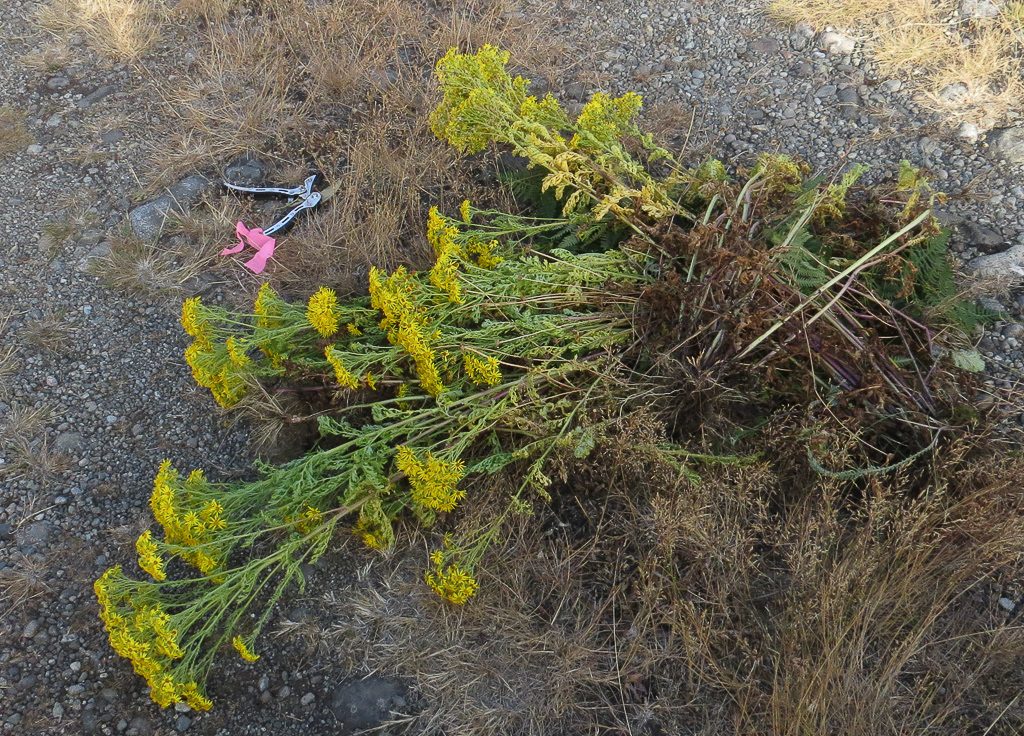
Dead Tansy in the Middle of the Road (heads were removed and bagged after taking this photo). Photo by Dennis Plank
Happy Tansy Hunting.
References
USDA NRCS Plant Guide on Tansy Ragwort
World of Weeds: Tansy Ragwort
Washington State Noxious Weed Control Board Brochure
Uses of Tansy Ragwort in Magic
Art Cornwall: Tansy in Witchcraft
Botanical.com (A modern herbal) on Tansy Ragwort
The Herbal Supplement Resource on Tansy Ragwort
Article on Tansy Contamination of Honey
